CALL US TODAY
254-20 422 3700
NAIROBI, KENYA
Naivasha Rd
EMAIL
aatf@aatf-africa.org
At AATF, we believe that the key to Africa’s prosperity lies inadequate food production. However, the field of agricultural technology which is a critical lever is not yet mainstream across the continent. As one of the few not-for-profit organizations specialized in promoting the adoption of agricultural technology in Africa, the complexity of the field can be confounding. This section highlights some of the most frequently asked questions touching on the foundation, our work and other general issues related to food security in Africa.
AATF is a not-for-profit organisation dedicated to increasing the productivity of resource-poor farmers in Sub-Saharan Africa. Its mission is to improve food security and reduce poverty by providing smallholders with greater access to improved farming technologies and know-how. In pursuit of this mission, AATF’s structure and operations draw on the best practices followed by both public- and private-sector institutions. AATF facilitates and promotes public/private partnerships whose purpose is to ensure that African farmers have access to agricultural technologies that improve their productivity. AATF is a registered charity under the laws of England and Wales and has been given a tax-exempt status in the USA. It is incorporated in Kenya and the UK and has been granted host country status by the Government of Kenya where it is headquartered.
The Foundation's core business is to link resource-poor smallholder farmers with the agricultural technologies they need to increase the productivity and profitability of their farming operations. The technologies promoted by AATF vary, depending on the priority needs identified by farmers, and can include chemical, mechanical, biological, and process solutions. AATF is well-positioned to identify and negotiate access to the technologies that farmers need, but which are not readily available to them. The Foundation's main objectives are to:
AATF resulted from an extensive two-year consultative process, supported by The Rockefeller Foundation, which began in 2000 and involved several African, European and American stakeholders concerned with finding effective ways of bolstering food security in Sub-Saharan Africa. Using the Millennium Development Goals (MDGs) and national Poverty Reduction Strategy Papers (PRSPs) as their starting point, the stakeholders engaged in this dialogue sought to more clearly identify key problems related to agricultural development in the region, and specifically those affecting access to and delivery of agricultural technologies to farmers. A design advisory council made up of stakeholders from African agricultural research institutes, the Consultative Group on International Agricultural Research (CGIAR), selected seed companies, organisations holding proprietary rights to potentially useful technologies, and donor organisations put together a framework for AATF’s operation and its role in technology transfer.
AATF is a small organisation currently made up of ten managers, recruited from various African countries, and about thirteen locally recruited support staff. The Foundation’s business plan envisions maintaining a small, highly focussed organisation that will work with networks around Africa to ensure that national needs are addressed and professional handling of licensed technologies is ensured. To better coordinate its work in West Africa, AATF will soon be opening a regional office in Abuja, Nigeria.
The Rockefeller Foundation, the United States Agency for International Development (USAID) and the United Kingdom's Department for International Development (DFID) provided financial support for the design and start-up of AATF activities. These donors remain the core investors of AATF. Recently, the Bill & Melinda Gates Foundation and the Howard G. Buffet Foundation provided significant project funding to address drought in maize.
AATF places great emphasis on partnerships. In pursuing its mission and objectives, AATF collaborates with the many stakeholders involved in agricultural development in Sub-Saharan Africa. It fosters the creation of new public/private partnerships and networks that address food security, poverty reduction, market development and economic growth. The Foundation works with its many partners to identify, acquire, adapt and deliver improved appropriate agricultural technologies to resource-poor farmers. Current AATF partners include African Governments (Kenya, Uganda, Tanzania, Nigeria), farmers, agricultural producers and consumers, regional and national agricultural institutions and agencies such as FARA, ASARECA, CORAF, KARI (Kenya) NARO & UNCST (Uganda) COSTECH (Tanzania) IAR, ARCN & NABDA (Nigeria), sub-regional organisations, international institutions and agencies such as CIMMYT, IITA, TSBF-CIAT, local and international NGOs, agri-business entities in addition to development investors and agricultural intellectual property holders such as Monsanto, BASF, Academia Sinica & Arcadia Biosciences.
AATF provides an effective mechanism for negotiating access to and transfer of proprietary and other technologies held by the public- and private-sector organisations anywhere in the world. The Foundation identifies and facilitates the transfer of the proprietary technologies needed by Africa’s smallholder farmers in ways that address and resolve the legitimate concerns of technology providers and users. AATF assumes the role of the ’responsible party’ in the technology transfer process and plays a key stewardship role in the development and deployment of the technologies. It also facilitates the creation of appropriate long-term networks to manage the deployment of these technologies at all stages in the value chain.
Nearly two-thirds of Africa’s poor people live in rural areas and depend on agriculture for their survival. However, low and often declining farm-level productivity is a major cause of persistently low incomes and hunger. Agricultural science and improved technologies have, over the past 50 years, made a huge positive impact on poverty and hunger in the developing world, but mainly in Asia and Latin America – Africa has yet to realise the full potential that agricultural science has to offer. While this potential is very real, neither public nor privately owned agricultural research and development organisations can, on their own, readily capitalise on it.
International life science companies hold the rights to a majority of the new agricultural intellectual property and have developed innovative technologies, processes and products that can be readily adapted to improve the productivity of African farmers. However, they have a little commercial incentive to do so. These companies are compelled to focus on larger markets, due to the high costs of product identification, development and testing, regulatory approval, manufacture and market development. They have little interest in crops grown and consumed only in African countries, where markets are small and growth potential is seen to be limited.
On the other hand, public sector agricultural research and development organisations in developing countries have considerable knowledge about local crop varieties, farming methods, and the needs of resource-poor farmers. Research institutions working on minor crops or on crops that are of crucial importance to the poor – but for which there are limited markets – usually rely on public funding. These organisations are thus often constrained in what they can do by low and uncertain government funding. Moreover, they normally have limited access to proprietary and other technologies owned by private and public sector institutions in developed and developing countries.
National agricultural research and development institutions, Government extension services, NGOs, seed companies, and farmer co-operatives and associations are key partners in making sure that the technologies reach farmers. Where necessary, AATF supports the dissemination of new technologies by supporting seed production, as well as farmer awareness and educational activities, to ensure that farmers can gain access at a reasonable cost.
AATF has so far defined as priority targets for its intervention the control of destructive weeds and insect pests in staple food crops, such as maize and cowpea; the improvement of nutritional quality in cereals; the improvement of banana, plantain and cassava productivity; the control of mycotoxins in food grains; and the alleviation of drought in cereals. These are common problems encountered by millions of smallholder producers over a wide geographic area in Sub-Saharan Africa.
AATF's priorities are based on the results of national and regional surveys that have identified the most urgent problems facing farmers. AATF works with its partners and stakeholders in a systematic and demand-driven process to select specific projects for implementation. Selected projects must address high-priority productivity constraints that can be overcome by access to and use of new agricultural technologies. Projects are pursued only if it is clear that, in the target countries or region, constraints to sustainable and profitable technology use by smallholders are either being overcome or can be addressed in a reasonable timeframe and at a reasonable cost.
The Foundation is currently implementing five major projects, with several others in the pipeline: Striga control in maize fields: Also known as witchweed, Striga is a parasitic weed that sucks nutrients from maize, reducing yields by up to 80%. AATF is promoting Imazapyr-resistant (StrigAway®) maize seed, which is effective against the weed, among farmers in the east and central Africa. AATF projects typically pass through three major phases: project formulation, product development, and product deployment. The Striga control project is in its deployment stage, and AATF is working with key partners and a wide range of stakeholders to encourage farmers to test and adopt the technology.
Developing Maruca-resistant cowpea varieties: The project aims at enabling smallholder farmers in Sub-Saharan Africa to have access to preferred cowpea varieties with resistance to the insect pest pod borer, Maruca vitrata. This project is at an advanced product development stage and is undergoing field testing of Maruca-resistant seed under controlled conditions
Improving banana resistance to banana bacterial wilt: In 2001, the banana bacterial wilt disease broke out in Uganda. It rapidly spread across eastern Africa and now threatens production of banana in the Great Lakes region. In this project – which is still in its product development phase – AATF and its partners are working to develop high-yielding bananas resistant to the deadly disease.
Water Efficient Maize for Africa (WEMA): Africa is a drought-prone continent, making farming risky for millions of small-scale farmers who rely on rainfall to grow their crops. This project aims to develop new drought-tolerant maize varieties that are well adapted to African agro-ecologies. Considerable work has been done to develop potentially viable products and this project is at an advanced product development stage preparing for field tests under controlled conditions.
Rice varieties with enhanced nitrogen use efficiency and salt tolerance: This project, which is in its product development stage, aims to develop rice varieties suitable for soils that are low in nitrogen and those that have a high salt content.
Pipeline projects: Several project concepts are in the pipeline. Concept papers have been developed for two of these, one on the control of aflatoxin poisoning in peanuts and maize, and another on mechanisation of cassava production and utilisation.
The ultimate goal of AATF interventions is to improve agricultural productivity and contribute to better livelihoods of smallholder farmers through access and use of appropriate technologies. All of AATF’s projects aim at addressing particular constraints and reversing the negative impacts.
Taking Striga control in maize fields as an example, conservative estimates show that when fully adopted in Kenya – where about 210,000 ha of land are infested with the weed – the proposed technology (IR maize) will lead to an extra 62,000 mt of maize with a value of about US$11.2 million at current prices. Data from on-farm trials in Kenya indicate that average yields of the technology have increased from 500 kg/ha (valued at about US$155) to 3,000 kg/ha (worth about US$920). The expected net benefit-to-cost ratio for the use of IR maize for an average farmer is around 45:1, a return of 45%. Moreover, because using the technology reduces the weed seed bank over time, abandoned farmland can be recovered and once again cultivated. The results being achieved in Kenya will be replicated in other countries where Striga has similar negative impacts on crop productivity through collaborative networks involving the respective national agricultural research institutes.
With regards to developing Maruca-resistant cowpea varieties, baseline studies and ex-ante impact assessments indicate yields will increase from 0.35 t/ha (without insecticides) to about 0.5 t/ha. This represents an anticipated yield increase of 20-40%. It is estimated that using improved, insect-resistant cowpea varieties will increase net farm-level profits by about 40%. This will mainly be due to a decrease in Maruca destruction and reduced use of expensive chemical pesticides. Health benefits will accrue from the expected reduction in the use of insecticides, and while difficult to measure, the costs associated with harmful environmental impacts of insecticide use will also decline.
Because of AATF’s work, farmers can eventually expect higher yields from their most important staple crops, including maize, cowpeas, bananas, rice and cassava. This will lead to improvements in food security, both at the household and national level. The higher yields will also potentially contribute to higher incomes and improved livelihoods, as farmers market the extra produce.
Sub-Saharan Africa (SSA) has the highest hunger and malnutrition rates and the least productive agriculture in the world. Approximately one-third of the population is reported to lack food security – defined as having enough food to lead healthy and productive lives. Between 1980 and 1995, Sub-Saharan Africa was the only region to experience a decrease in crop production, with average yields falling by 8%. This compares to an increase of 27% in Asia and 12% in Latin America. Developments in agricultural science and technology hold out hope for major improvements in food security and poverty reduction in SSA. African national Poverty Reduction Strategy Papers (PRSPs), the New Partnership for Africa’s Development (NEPAD), and the policies and plans of multilateral development agencies emphasise the need for Africa to access new and better agricultural technologies. Some of these technologies – some of which are proprietary – can be readily adapted to the agro-ecological conditions in the region and made available to poor farmers to improve production systems, as well as agricultural trade and commerce, and in turn, stimulate broader and more equitable economic growth on a sustainable basis. But this technology adaptation and transfer process require an advocate – one that represents the interests of all parties – and that is the role AATF has assumed.
Genetically Modified Organisms (GMOs) certainly provide one of many solutions that farmers could use to increase their productivity. The use of GMOs has invoked emotive debates from several quarters, but AATF’s approach (and its advice to others) is to avoid generalisations or blanket descriptions that describe GMOs, and indeed science in general, as either good or bad. As with all significant decisions made by governments, and given Africa's urgent need to increase agricultural productivity, policymakers must consider the options available and carefully weigh the risks and benefits associated with them before taking action. One of AATF's major contributions is to provide partners and stakeholders with as much information as possible regarding these risks and benefits. In identifying solutions available for farmers, the Foundation is committed to ensuring full and rigorous testing and regulatory compliance of all technologies intended for use by smallholder farmers. Environmental protection, health, food and biosafety standards will not be compromised.
Royalties are usually calculated as a percentage of gross or net profit, or a fixed amount per sale, that owners of intellectual property rights are entitled to receive by contract. In negotiating access to technologies, AATF signs legal agreements that ensure products developed using the technologies are licensed to AATF, and the Foundation, in turn, makes them available to smallholder farmers without royalty charges.
The process begins by identifying with farmers, as well as with agricultural development organisations, the priority problems that need to be resolved. AATF then consults with technology holders to determine which technologies would be the most appropriate and effective for addressing the identified farmers’ priorities. Acting as an intermediary, AATF negotiates with technology owners on behalf of the eventual beneficiaries and, if successful, it enters into licensing agreements that allow it to access and use the proprietary technology. The Foundation then makes contractual agreements with institutions in the region and elsewhere for further research, adaptation and dissemination. As the responsible partner in these relationships, AATF monitors compliance with the requirements of the agreements to protect the interests of users and technology owners alike. In this way, AATF facilitates the formation of public/private partnerships that drive the transfer and use of proprietary technologies by Africa’s resource-poor smallholders. While the motivations underlying the actions of the different partners may vary, they share a common interest in helping to reduce food insecurity and poverty across the continent, as well as in improving the commercial viability of African agriculture.
Striga attaches itself to the roots of host plants and siphons the nutrients and water intended for plant growth. This stunts and discolours the plant, finally causing it to wither resulting in grain yield losses. Striga is most damaging to the crop before emerging from the soil. Early signs of Striga attacks are folded leaves and wilting even where there is sufficient soil moisture. Some crops act as trap crops or false hosts. They stimulate the Striga seeds to germinate. However, the Striga seedling cannot successfully attach to the trap crops to feed and hence it dies.
The Water Efficient Maize for Africa (WEMA) project is a public-private partnership coordinated by the African Agricultural (AATF) to develop drought-tolerant and insect-protected maize varieties. The purpose of these improved varieties is to produce more reliable harvests under moderate drought conditions and protect maize from insects. These varieties will offer benefits to smallholder farmers – most of whom are women – so they can feed their families and increase their incomes.
The CFTs are done to test new plants under real field conditions and to assess the performance of the transgenic trait in a local environment and local germplasm. Data from the trials will enable selection of the best lines that perform better under drought stress. This will help in eventual seed production for regulatory approval and deployment to farmers. The CFTs are being conducted by the national agricultural institutes in Kenya, Uganda and South Africa. The institutes are working with the International Maize and Wheat Improvement Center (CIMMYT), and Monsanto who are partners in the WEMA project.
CALL US TODAY
254-20 422 3700
NAIROBI, KENYA
Naivasha Rd
EMAIL
aatf@aatf-africa.org

Olawale Ojo
Hybrid Seed Market Development Manager
Olawale Ojo, brings over a decade of experience in the hybrid seed industry. He holds a Master of Business Administration (MBA) in Agribusiness from the Federal University of Agriculture, Abeokuta, and a Bachelor of Engineering (B.Eng.) in Agricultural Engineering from the Federal University of Technology, Akure.
Complementing his academic achievements are certifications in Professional and Digital Marketing, Social Media Management, and Integrated Farming Systems. Olawale applies his expertise to drive growth, innovation, and sustainability in the agricultural sector.
With a proven track record at Bayer CropScience, The Monsanto Company, and Syngenta, Olawale has successfully introduced innovative hybrid seeds, expanded market penetration, and established partnerships with key stakeholders. At Bayer CropScience, he profiled seed markets across West Africa and spearheaded initiatives that increased market share and demand for hybrid vegetable seeds. His tenure at Monsanto saw the successful launch of hybrid maize seed varieties, while at Syngenta, he facilitated agribusiness development projects that empowered smallholder farmers and boosted yields.
Olawale’s unwavering commitment to sustainable agriculture is evident through his collaborations with organizations like AGRA, ZOWACEL, and SAKAKAWA, which have expanded market reach and improved smallholder farmer adoption of hybrid seeds. His technical knowledge, strategic leadership, and dedication to fostering innovation continue to transform the hybrid seed industry, creating a lasting impact on food systems and rural livelihoods across Sub Saharan Africa.
He is a Nigerian national.

TUYISENGE Jean d’Amour
Project Accounts Assistant, RABP
TUYISENGE Jean d’Amour is a professional finance expert with six years of experience in financial management, budgeting, and reporting across both non-profit and private sector organizations. He is currently finalizing a Master’s degree (MBA) in Accounting and Finance at the University of Kigali (2025). He holds a Bachelor’s degree in Accounting Science from the University of Rwanda and a High School Diploma in Accounting. Additionally, he has obtained international certificates in Financial Management, Climate Finance, and Risk Management from the Cornerstone OnDemand Foundation, SDG Finance Academy, UNITAR, and the International Trade Center.
Before joining AATF as a Project Accounts Assistant (Rwanda, Kigali Program Office), he worked as a Finance Officer at ARCOS, where he was responsible for overseeing organizational financial operations, ensuring compliance with financial regulations, and managing multi-project budget controls and reporting. He also served as an Accounting & Finance Officer at Nature Rwanda, where he managed financial planning, donor reporting, and tax compliance.
Previously, he worked as an Accountant at Agrah Care Farm Service Center, where he was responsible for financial recording, fund management, and reporting. Additionally, he worked as a Monitoring, Evaluation, and Learning Officer at One Acre Fund, contributing to the development of data-driven financial strategies to assess project impact and effectiveness. He also served as a Data Entry Officer at One Acre Fund, where he was responsible for collecting, processing, and maintaining accurate payment data from farmers while assisting in report generation.
TUYISENGE Jean d’Amour is proficient in accounting and financial management software, including QuickBooks, Odoo, Sage Accounting Software, Koobo, and TimeTrex.
TUYISENGE Jean d’Amour is Rwandan.
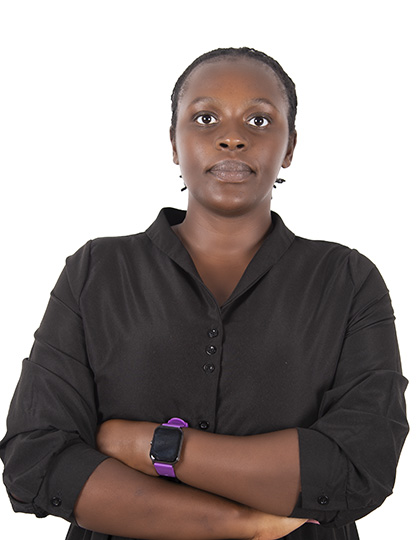
Annet Mbabazi
Programme Administrative Assistant, RABP
She holds Bachelor of Science degree in Supplies and Procurement Management from the University of Kigali.
She has joined AATF as a Project Administrative Assistant – RABP.
Annet has previously worked with Chemonics International under a USAID program as a Project Assistant from 2019 to 2021 where she held the position of Project Assistant and HR Assistant. She has also worked with Airtel Rwanda as a Front Desk Specialist.
Annet brings on board experience in project administration, event management, procurement, logistics, and human resources in Rwanda.
Annet MBABAZI is a Rwandan

Dr. Leonce Dusengemungu
Programme Coordinator, RABP-CMP
Dr. Dusengemungu holds a PhD in Biotechnology from Copperbelt University, Zambia, a Master of Science in Biotechnology and Molecular Biology from Lanzhou University, China, and a Bachelor of Science in Molecular Biology and Biotechnology from the University of Dar Es Salaam, Tanzania.
He has worked with TechScientia Consultancy Ltd as a Consultant, supporting research and analysis across various agricultural value chains. He has also worked as a Consultant with Byose Ltd, focusing on the development of biofertilizers, and as a Lab Technician at the Rwanda Agriculture Board (RAB).
He is a dedicated mentor at the AFF-ALU Food Systems Mentorship Program and an African Food Fellow, he is a member of the American Society for Microbiology. He is committed to advancing biotechnology, food security, and sustainable agriculture through research, innovation, and strategic partnerships. He is a national of Rwanda, and speaks various languages including English, French, Kiswahili, Chinese and Kinyarwanda
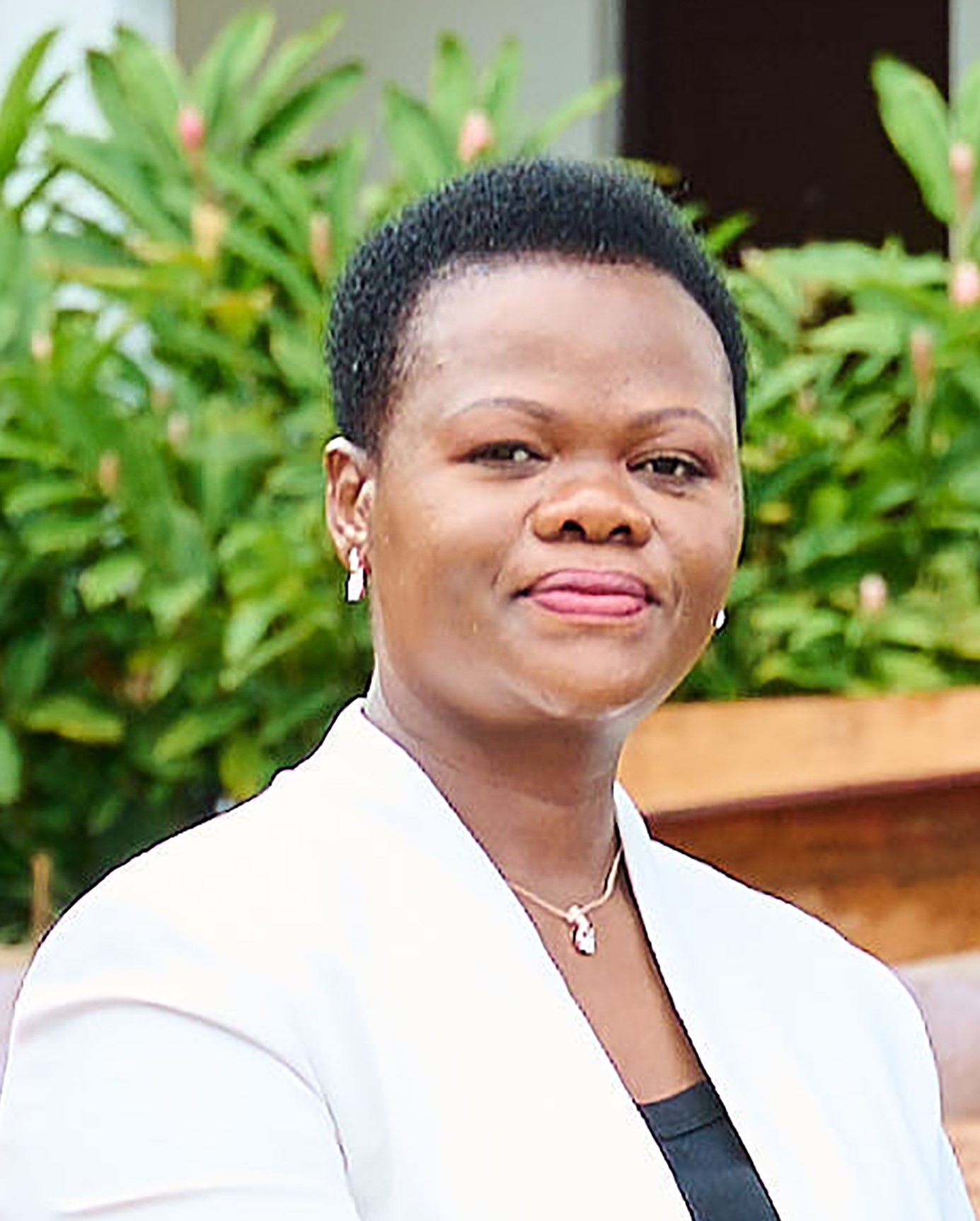
Dr Grace Kamau
Board Member
CPA Dr. Grace Kamau is an accomplished Leader in Finance, Strategy, Leadership, and Governance professional, expert, and researcher.
She has experience in impacting business direction and performance, with successful leadership strategies, tactical decision-making, and forward-thinking approaches. She is the Chief Executive Officer at ICPAK and secretary to the council.
She is currently the Chief Executive Officer and Secretary to the Council of the Institute following her appointment in August 2023 having acted in the same position from January 2023. Previously, she served as the Director, Finance and Strategy position within ICPAK. She represents the Institute as the Technical Advisor to IFAC and as a board member in PAFA. She is a board member of the Financial Reporting Centre (FRC), a member of the Court Annex Mediation Accreditation Committee, and a board member of Exinity East Africa Limited, where she Chairs the Audit and Risk Committee. She was recently appointed to the International Financial Reporting Standards – IFRS Foundation’s Council, as a Council Members. She has also held various leadership positions in blue-chip companies in Kenya and beyond. She is a well-seasoned, all-rounded finance, leadership, and governance professional and researcher. She possesses vital experience and expertise in stakeholder management, advocacy, training, strategy formulation and execution and talent management among other skills.
CPA Dr. Grace holds a Ph.D. in Business Administration (Strategic Management), a Master of Business Administration (MBA) (Strategic Management) Degree both from the University of Nairobi, a Bachelor of Commerce (Accounting) degree from Kenyatta University and a Certified Public Accountant. She is also a Member of ICPAK, Institute of Investment and Financial Analyst (ICIFA), a member of Institute of Directors(IoD) and a member of the Association of Women Accountants of Kenya (AWAK).

Prof. Maggie Gill
Member, Board of Trustees
Professor Maggie Gill has had a 40-year career in the agri-food sector, split almost evenly between conducting research, managing research programme funding and advising research funders, in the UK , New Zealand, European Commission and, for international development, the World Bank and numerous national international development departments.
Her original interests were in livestock nutrition (mainly grass-fed sheep and cattle) but over time those broadened to interests on interactions between agriculture more generally, with the environment and again food systems and in the last two decades to the interface between science and policy.
She was the first Chief Scientific Adviser on Rural Affairs and the Environment in the Scottish Government and currently chairs both the Scottish Science Advisory Council and BBSRC’s Sustainable Agriculture and Food Strategy Panel. She was instrumental in creating the Zoonoses from Emerging Livestock Systems research programme (ZELS Programme Impact Report – UKRI) whilst a Senior Research Fellow at DFID, was a member of the Data, Evidence and Science Working Group of the RSE post-Covid-19 Futures Commission (Home – RSE Post-Covid-19 Futures Commission :RSE Post-Covid-19 Futures Commission (rsecovidcommission.org.uk) and a member of the Science legacy of Covid Working Group Working Group of the SSAC (SSAC Report – Building on the Science Legacy of Covid-19 in Scotland.pdf (scottishscience.org.uk)
She is an Emeritus Professor at the University of Aberdeen, currently living in rural Aberdeenshire.
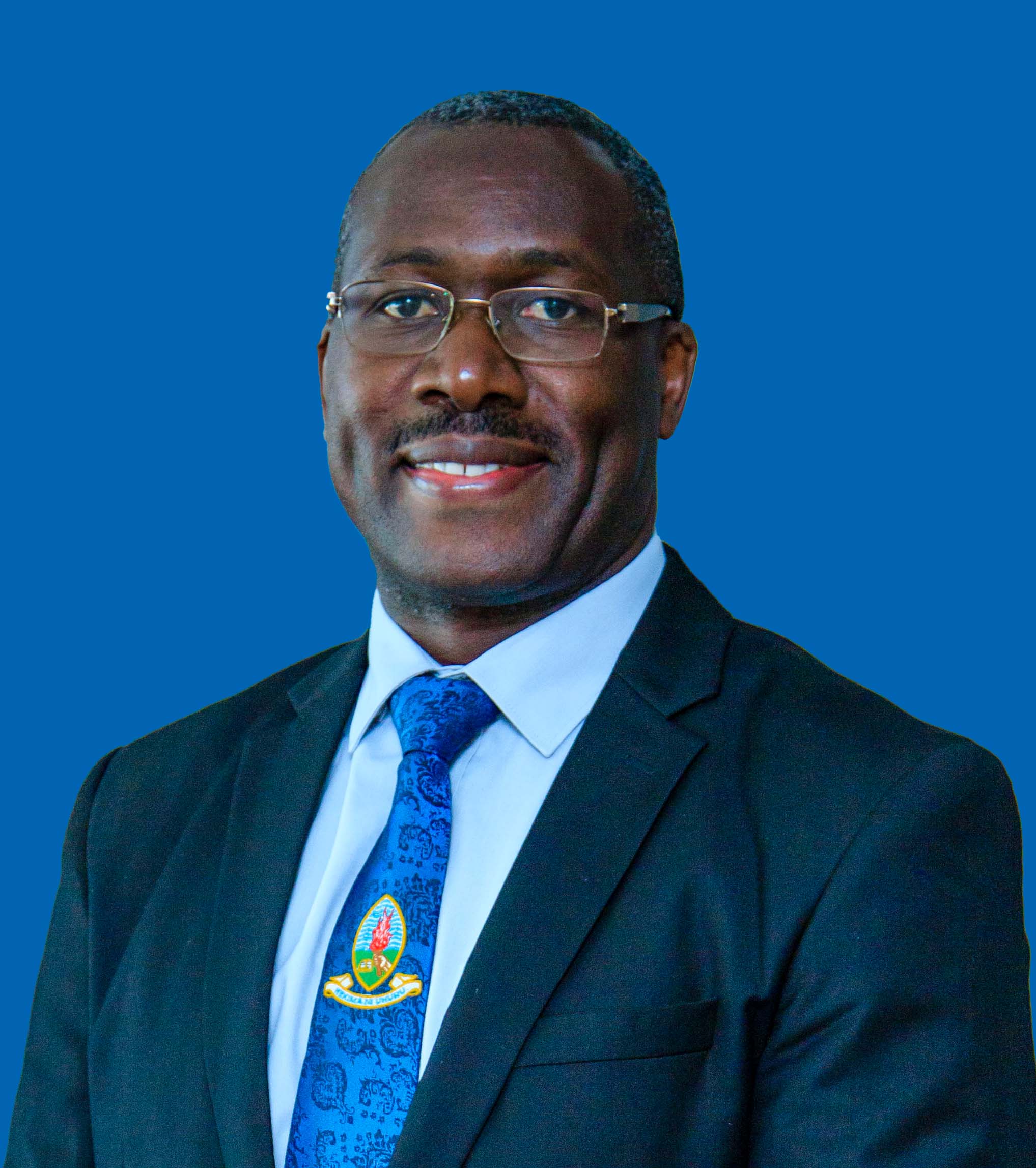
Prof. Saudin Jacob Mwakaje
Member, Board of Trustees
Prof. Mwakaje is an Associate Professor of Law at the University of Dar es Salaam School of Law, Tanzania.
Currently, he is the Chief Corporate Counsel and Secretary to Council of the University of Dar es Salaam and Member of the ARIPO Board of Appeal for 2024/25 tenure. He is a chairman of the Board of Directors at National Arts Council and a member of the Board of Directors of the ‘’’Tanzania Telecommunications Company Limited (TTCL). He is a seasoned researcher and has extensively published in the fields of intellectual property rights (IPR) and investment law. He is also a legal practitioner licensed to practice in Tanzania Mainland and Zanzibar. He is one of the founding partners of NexLaw Advocates, a law firm based in Dar es salaam, Tanzania. He heads the Intellectual Property Department of the firm handling contentions and non-contentious matters for local and international clients. His areas of practice and research are: Intellectual Property Law, Investment and Corporate Transactional Law, and international trade and finance law.
He holds a Doctor of Philosophy PhD (Dar), Master of Laws (LL.M) in Intellectual Property, Commerce and Technology (University of New Hampshire, Franklin Pierce Law Center, USA), LL.M (Dar), Bachelor of Laws (LL. B) (Dar). Prof. Mwakaje has advised clients (large corporations and SMEs) on technology transfer agreements and on how to integrate intellectual property issues within the broader context of their business so as to maximize their enterprise’s assets portfolio and also maintain their competitive edge in the market.
Prof. Mwakaje is a tutor in the World Intellectual Property Organization (WIPO) Academy DL courses (has tutored DL 301E, DL205E18S1, DL4001E20S1, and DL303E21S3). He has worked as a consultant and legal advisor in several projects for public and private sector and also for the African Regional Intellectual Property Organization (ARIPO), World Intellectual Property Organization (WIPO), World Trade Organization (WTO), United Nations Conference on Trade and Development (UNCTAD), East African Community (EAC), Inter-University Council for East Africa (IUCEA), and the World Bank.

Dr Katrin Glatzel
Board Member
Katrin Glatzel is public policy specialist with over 11 years of experience working at the intersection of research, policy, and governance with a focus on agrifood systems transformation in Africa.
She holds a PhD in Environmental Research from Imperial College London, the MSc Public Management and Governance from the London School of Economics and Political Science, and a BA in European Studies from Maastricht University in the Netherlands.
She is currently a Senior Researcher and Program Leader at the University of Bonn’s Center for Development Research (ZEF) in Germany. She leads the work of the Agrifood Systems-Transformative Research Policy project which provides evidence-based policy support and supports political dialogue between African and European governments. Her research interests span food systems governance and public policy, the climate-agriculture-nutrition nexus, and the bioeconomy.
Prior to joining the Center for Development Research in 2023, she was the Director of Policy Innovation at AKADEMIYA2063 in Dakar, Senegal, and in charge of the organization’s research activities around governance and public policy to accelerate food systems transformation and inclusive economic growth in Africa. She oversaw the implementation of the Digitally Enabled Resilience and Nutrition Policy Innovations (DERPIn) project and served as the program head of the Malabo Montpellier Panel for over ten years. She also served a Research Fellow at the International Food Policy Research Institute (IFPRI) and Policy and Research Officer at Imperial College London.
She is a Member of the Scientific Advisory Group to the GIZ Global Program on Food Systems Transformation, Member of the Board of Guzakuza, Visiting Researcher at Imperial College London and an Extraordinary Lecturer at the University of Pretoria’s Department of Agricultural Economics, Extension and Rural Development.

Kenneth Somayina Obichukwu
Plant Operator, Mechanization
Kenneth is a Mechanical Engineering graduate (BEng) from Olabisi Onabanjo University, with a strong foundation in mechanical systems and operations.
As the Plant Operator in Mechanization at the African Agricultural Technology Foundation (AATF), he plays a pivotal role in overseeing the efficient operation and maintenance of advanced cassava processing equipment at the Fasola Agric. Hub in Oyo State, Nigeria.
Prior to joining AATF, Kenneth gained valuable industry experience as a Machine Operator in a corrugating machine within the paper converter industry, where he gained valuable skills in equipment handling, troubleshooting, and quality assurance. In his current role, Kenneth is dedicated to ensuring seamless cassava processing operations, maintaining compliance with Health, Safety, Environmental, and Quality (HSEQ) standards, and contributing to the empowerment of village-based processors through access to cutting-edge mechanization services. A results-driven professional with a hands-on approach, he is committed to leveraging his expertise to support AATF’s mission of enhancing agricultural innovation and sustainability across Africa.
Kenneth is a Nigerian national.

Albert Anthony
Program Officer ,Seed Field
Operation
Albert Anthony is a trained Plant Breeder and a practicing Seed Production Specialist.
He has over 11 years’ experience working with Agricultural Firm and Biotechnology regulatory body, where he actively involved in crop improvement, seed production and seed system. He has practical experience working with seed out-growers and Agro-dealers in cowpea value chains, seed regulations and certifications.
Before joining AATF, Albert worked for National Biosafety Management Agency as a Principal Scientific officer. He also worked for WACOT LTD as Research Associate in Seed division.
He holds a M.Sc. in Plant Breeding from Ahmadu Bello University Zaria and B.Agric. (Crop Production), from and Adamawa State University, Mubi.
Albert will be responsible for overseeing and managing the entire cowpea seed field operations. He will be propelling the efficient and high-quality production of cowpea seeds by working closely with various teams, including seed out-growers, agronomy, research and development, and operations.
Albert is a Nigerian by nationality.

Naomi Gikonyo
Program Officer Value Chains
and Market Development
Naomi Gikonyo is a trained agricultural economist with vast knowledge in agricultural value chains, market development, and agricultural technology adoption and commercialization.
With over five years of experience, Naomi has excelled in project management, market analysis, and the development of innovative strategies to support smallholder farmers. Her work focuses on enhancing food security and improving the livelihoods of farmers through the application of data-driven insights and research methodologies. Naomi holds a BSc. in Agribusiness Management, an MSc. in Agricultural and Applied Economics and she is also a certified public accountant (CPA K).
Previously, Naomi worked as a County Analyst at East Africa Market Development Associates (EAMDA), where she was instrumental in executing multiple donor-funded agricultural development projects. During her tenure, Naomi contributed to market studies, facilitated value chain analyses, and engaged stakeholders, including smallholder farmers and agribusinesses to drive agricultural innovation and strengthen market linkages. Naomi’s expertise in both qualitative and quantitative data analysis allows her to derive actionable insights that inform policy and strategic decisions. She has a keen interest in climate-smart agriculture and has worked on several projects that address the impacts of climate change on agriculture, contributing to the development of sustainable practices that increase resilience in farming communities.
At AATF, Naomi is responsible for supporting the commercialization and scaling of agricultural technologies across key projects. She contributes to the design and implementation of market studies and value chain analyses for selected commodities, ensuring that agronomic practices, climate change implications, and economic opportunities are thoroughly assessed. Naomi also plays a key role in creating linkages between value chain players, including farmer cooperatives, marketing groups, and private sector partners, fostering inclusive business models that benefit smallholder farmers and contribute to the overall sustainability of agricultural innovations in Sub-Saharan Africa.
Naomi is a Kenyan National.

Samuel Ogunleye
Project Coordinator, Mechanization
Samuel Ogunleye is a diligent agribusiness coach, people’s trainer and agribusiness development expert with extensive experience in: Project Management, Agricultural value chain development, Commodity market research, Extension services, and Outgrowers’ management.
As a seasoned Agribusiness Consultant, I have successfully created sustainable, mutually beneficial partnerships among various stakeholders in the agricultural value chain. With credentials as a Professional Agri-Business Coach Certification from the International Centre for Development Oriented Research in Agriculture (ICRA), a Master’s Degree in Agricultural Extension and Rural Development from the Federal University of Agriculture, Abeokuta (FUNAAB), Samuel leverages his expertise to drive growth, productivity, and profitability in the agricultural sector, fostering a more sustainable and equitable food system.
Samuel is a Nigerian national.

Solomon Akinyemi Makinde
Hybrid Seed Production Officer
Solomon Akinyemi Makinde is a trained Plant Breeder and Seed Production Specialist.
He has over 15 years’ experience working with several International Agricultural organizations, where he actively involved in crop development, evaluations under multiple stresses, registration for commercialization, seed production and seed system. He has practical experience working with seed out-growers and agro-dealers in maize value chains, seed regulations and certifications.
Before joining AATF, Solomon worked for Crop Science division of Bayer Nigeria Limited as Seed Production Manager. He was previously the Plant & Field Operations Supervisor and Technology Development Representative for Monsanto Agriculture Nigeria Limited. He also worked as Research Supervisor and Research Technician for Africa Rice and Maize Improvement Program of International Institute of Tropical Agriculture (IITA), respectively.
He holds a PhD in Plant Breeding, M. Agric. (Plant Breeding), Post-Graduate Diploma in Plant Breeding and Seed Technology from Federal University of Agriculture, Abeokuta, Ogun state, Nigeria and MBA in Agribusiness Management from Rome Business School, Italy.
Solomon will be responsible for overseeing and managing the entire hybrid maize seed production process, from field operations to plant activities. He will be driving the efficient and high-quality production of hybrid maize seeds by working closely with various teams, including seed out-growers, agronomy, research and development, and operations.
Solomon is a Nigerian national.
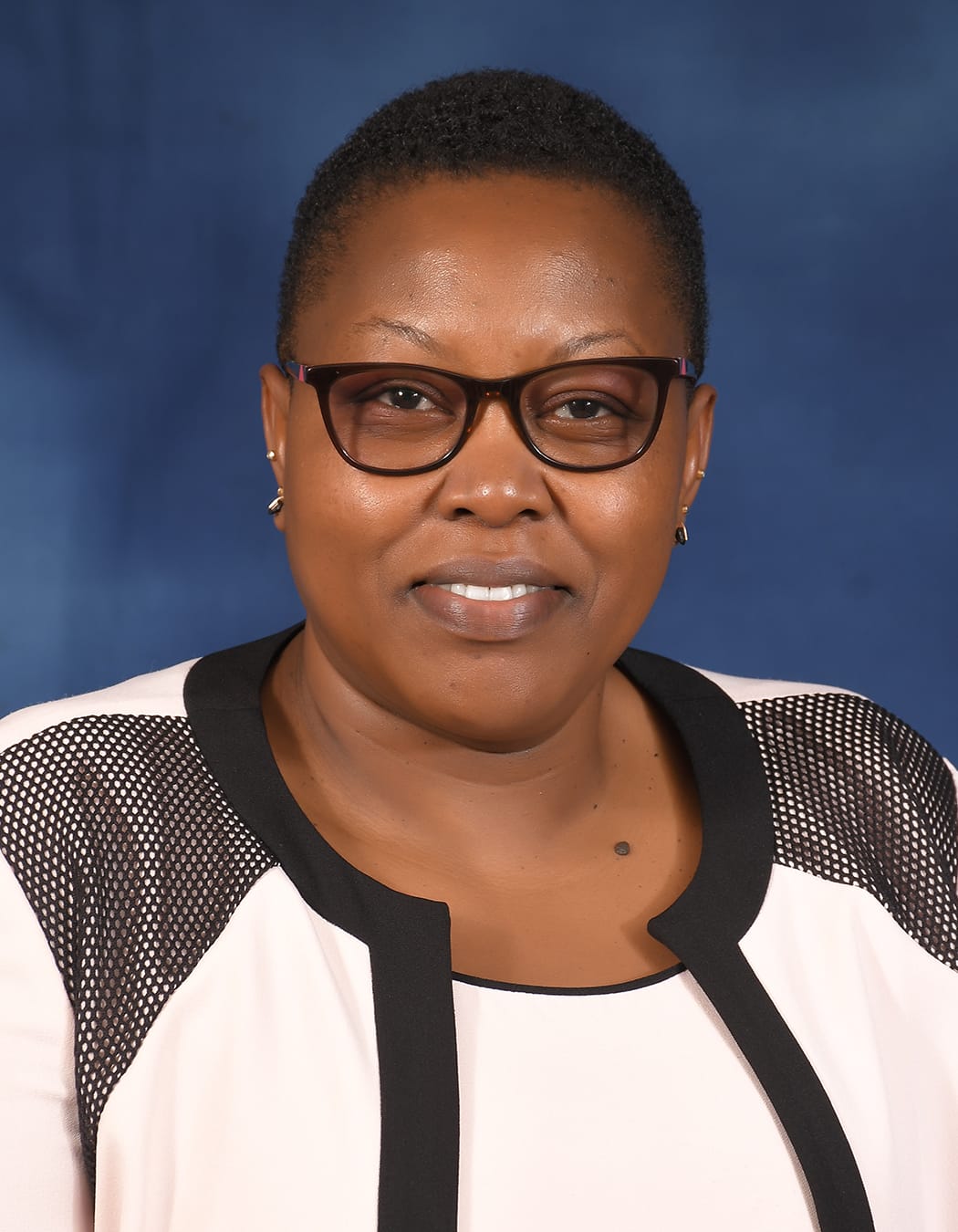
Agnes Musau
Procurement Manager
Agnes Musau is a Supply Chain Management practitioner holding a BCom in Purchasing & Business Logistics from Daystar University, Diploma in Purchasing & Supplies Management from Kenya Institute of Management (KIM), East Africa Customs Freight Forwarding Practicing Certificate (EACFFPC) from Kenya School of Revenue Administration (KESRA), Diploma in air cargo services from IATA and currently pursuing her MCIPS Certification.
Before joining AATF, Agnes worked with ActionAid International Kenya, a non-profit organization working with Women, Children and Youth, where she led Procurement and Administration unit for the country program as well as provided support to the Secretariate – Nairobi Hub office for shared services. Prior to that, she worked with Amiran Communication Limited, a private limited company and a subsidiary of Balton CP, with international presence in Europe and Sub-Saharan Africa, focusing on providing advanced technology solutions across Africa, where she served in various positions on Logistics and Administration.
Mrs. Agnes Musau has over 10 years’ experience in Supply Chain Management and has provided specialist support on Supply Chain Management matters. She is committed to ensuring Supply Chain Management function become a business partner through collaboration and innovative support.
Agnes is responsible for the Procurement function at AATF. Agnes is a Kenyan national.
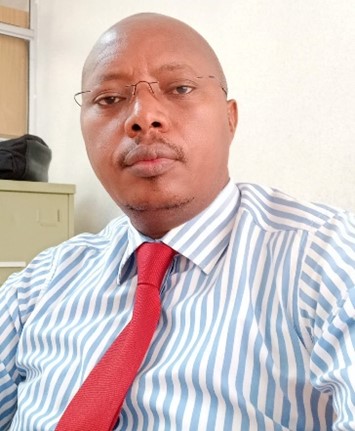
Josephat Kimanzi
Business Services Support Manager
Josephat holds a Master of Arts in Community Development and a Bachelor of Arts in Peace and Conflict Transformation, both from Daystar University.
He is a seasoned banker having worked with different banks for over 15 years in various leadership positions. Before joining AATF, he worked in Faulu Microfinance Bank Ltd as a Business Growth and Development Manager.
He also served as a Manager Operational Excellence, focusing on service delivery, controls and compliance. He was part of the core team that transitioned Faulu into a fully-fledged microfinance bank. Josephat also worked for SMEP Microfinance Bank, African Banking Corporation (ABC), Charterhouse Bank Ltd and East Africa Building Society (EABS) bank.
Josephat is an experienced business growth and operations professional whose passion is to economically transform communities.
Josephat is a Kenyan National.

Gabriel Macharia
Data Management Officer
Gabriel Macharia is a dedicated Data Management Officer at the African Agricultural Technology Foundation (AATF) who bears a strong passion for turning data into actionable insights. He is deeply involved in managing and standardizing data for various research projects across the African continent. Gabriel also mentors agritech start-ups, helping them leverage data to drive sustainable innovations.
Before his role at AATF, Gabriel honed his skills as a Senior Python Developer at Trendy Gadgets Company Ltd, where he led significant projects that optimized data systems and improved overall efficiency. His experience as a Data Scientist and Administrator at Data Glacier in South Korea allowed him to develop automated models that boosted marketing performance and provided clients with valuable insights.
Gabriel’s journey also took him to Strabag International GmbH in Cologne, where he worked as a Data Scientist and IT Officer. There, he developed and scaled machine learning models that enhanced productivity and provided the company with crucial data-driven strategies. His earlier experience as an Administrator and Information Analyst at Brade Gate International College was equally impactful, as he built data systems from scratch and implemented strategies that improved customer engagement.
Academically, Gabriel holds an MSc in Biomathematics from Strathmore University and he earned his BSc in Mathematics and Computer Science from Kirinyaga University, with a focus on computer science and the application of mathematics in technology. Additionally, Gabriel is certified in Networking (CCNA) from Kenyatta University, specializing in the configuration and management of network systems.
Gabriel’s blend of technical expertise, hands-on experience, and a genuine love for problem-solving makes him a valuable asset in any data-driven environment. He’s always eager to learn, grow, and contribute to meaningful projects.

Sylvia Kyeyune
Member, Board of Trustees
Sylvia Kyeyune is an accomplished seed industry executive with 20 years of leadership experience driving business growth, innovation and sustainability with a unique blend of technical and commercial expertise. She holds dual Master’s degrees in Business Administration from Uganda Management Institute and Agriculture majoring in Crop Science from Makerere University, Kampala and a Bachelor’s degree in Agriculture from the same University.
She is currently the Chief Executive Officer of Simlaw Seeds Company Uganda Limited which she has successfully steered to become a leading supplier of top quality seed. She previously worked with Mt. Elgon Seed Company where she served as a Marketing Manager since 2003.
Her passion is to ensure better access to improved agricultural technologies by the smallholder farmers. She has proven ability to provide strategic guidance and oversight to drive business development and foster collaborative partnerships with industry stakeholders.
She serves on the Board of the Uganda Seed Trade Association and previously served as the association’s Chairperson in 2015-2017. She also served as a Board member of the Africa Seed Trade Association for four years. This position gave her exposure about the global seed industry dynamics and also created a platform for strategic partnerships with international stakeholders. She also serves on committees of other diverse institutions.

Sylvia Horemans
Member, Board of Trustees
Sylvia possesses over 20 years management experience having worked across diverse sectors comprising parastatal and private companies. She holds a higher Diploma in Project Management from Cambridge University and various Diplomas in Personnel Management and Industrial Relations, Business Management and Administration, Sales and Marketing, and Certificates in Plant Breeding, Seed Production and Agribusiness.
Sylvia joined Kamano Seed in 2004 and rose from Marketing Director to the position of Chief Executive Officer/share holder. She has attended Seed Breeding training in Sweden and Sri Lanka and is affiliated to Making Markets Matter which has exposed her to a lot of international businesses. She is also a committee member of Zambia Seed Traders Association.
Due to her hard work and determination, Kamano Seed was awarded 1st prize for having marketed and sold the highest volume of orange maize seed under HarvestPlus/Ag Result. Sylvia has passion for women and youth and is always trying to better their lives. She has continued to play a big role in Zambia by making sure that the small holder farmers are well taken care of through food security.
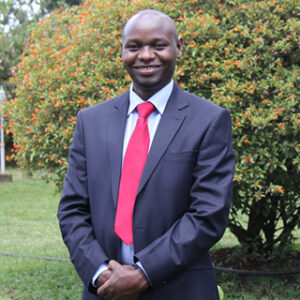
Daniel Kyalo Willy
Senior Manager- Agribusiness, Policy and Commercialization
Daniel Kyalo Willy is an accomplished agricultural economist with over 15 cumulative years of passionately working with smallholder farmers, particularly in designing and implementing inter-disciplinary agricultural research projects, household and market surveys and quantitative/qualitative data analysis. His research has mainly focused on sustainable agricultural intensification and productivity, technology adoption and transfer, impact assessment of agricultural technologies, institutional economic aspects of agriculture, agri-environmental interactions and agricultural value chains assessment. Daniel holds a Bsc. in Agricultural Economics (Egerton), an MSc. in Agricultural and Applied Economics (Egerton) and a PhD in Agricultural and Resource Economics (Bonn). Daniel’s accomplishment in scientific communication has been demonstrated through his publication record culminating into over 30 peer reviewed papers, conference papers, working papers, policy briefs and technical papers. Before joining AATF, Daniel was a lecturer and researcher at the department of Agricultural Economics, Kenyatta University. Previously, he was a Post-doc research fellow at the Institute for Food and Resource Economics, University of Bonn-Germany, a research assistant at Tegemeo Institute of Agricultural Policy and Development, technical assistant at AATF, and a graduate research assistant at both Egerton University and University of Bonn. Daniel has been instrumental in conducting research to support agricultural policy reforms in Africa such as reforms on land policies, agro-input marketing and input subsidies in Kenya, wetland resources management in Uganda, Tanzania and Rwanda, among others. He has successfully supervised to graduation 12 MSc. students. Daniel held several administrative responsibilities at Kenyatta University at both school/faculty and departmental level. He is a member of the African Association of Agricultural Economists (AAAE) and has consulted for the National Research Fund (NRF) – Kenya, Solidaridad East and Central Africa, BOKU University – Austria, and Michigan State University. As TAAT Policy Enabler Programme Officer, Daniel is responsible for implementing activities within the program towards facilitating the creation of an enabling environment for efficient deployment of high impact agricultural technologies in 9 value chains across over 20 countries in Sub-Saharan Africa. His work includes policy analysis to identify policy, regulatory and institutional related bottlenecks on seed systems, agricultural input and output markets; engaging policy makers and other relevant stakeholders to facilitate the elimination of these bottlenecks and administrative responsibilities related to project planning and fiduciary activities. Daniel is a Kenyan national.

Dr. Bernard Oddy Ehirim
Programme Officer-Stewardship
Bernard Oddy Ehirim is an experienced Crop scientist with a core bias in plant breeding, genetics, and biotechnology.
He has more than a decade working experience with the international and national agricultural research system where he has been actively involved in laboratory and field research, development, and improvement of crop varieties across Africa. He has a PhD in Plant Breeding and Genetics form the Federal University of Technology Minna Nigeria, an MSc in Crop Science from the University of Ibadan, Nigeria with Scholarship from Alliance for Green Revolution in Africa (AGRA) and a BSc in Plant Science and Biotechnology from Abia State University, Uturu, Abia State, Nigeria.
Before joining AATF, Bernard was a Research fellow with the AfricaRice center from 2012 to 2014 and worked as a Principal Research Officer, with the National Cereals Research Institute (NCRI) Badeggi, Nigeria where he worked as a plant breeder and biotechnologist. He was the Biotechnology Laboratory manager of same institute, a member of the rice breeding task force (RBTF) for Africa, coordinated and was directly involved in the research that led to the eventual nomination, registration and release of the first ever submergence rice variety in Nigeria and the first ever Hybrid rice variety in Nigeria sponsored by Bayer. Bernard was the Trial Manager to the NEWEST rice project for Africa, a member of the grant and proposal writing committee of NCRI that attracted several grants for the research and development of rice in Nigeria. He is also, member to several professional bodies related to Agriculture, Research, and Development.
Bernard’s publications include several journal articles, and conference papers presented at international and national conferences.
As a Programme Officer-Stewardship at AATF, Bernard is responsible for supporting the compliance and monitoring of activities related to stewardship, formulation and implementation of strategies and plans to facilitate effective and efficient product delivery through proper monitoring and regulatory compliance. Bernard has always been involved and excited to be part of technologies that help bring food and extra income to the table of resource-poor African farmers. He is a Nigerian.

Dahlia Garwe
Member, Board of Trustees
Dahlia holds a PhD in Molecular Biology from the University of Cape Town and an MSc degree in Biotechnology from the University of Zimbabwe as well as a BSc (Hon) degree in Biochemistry from the same University. Additionally, she has completed an Executive Diploma in Business Leadership.
Dahlia is currently the Corporate and Industry Affairs Executive at Tongaat Hulett. She previously worked at the Tobacco Research Board in various capacities since 1991. Although her primary qualification is Molecular Biology, Dahlia has since been exposed to management at senior level and the implementation of Quality Management Systems.
She is a Fellow of the Zimbabwe Academy of Sciences. Dahlia joined the Seed Co Limited Board in February 2011 and also sits on the Boards of a number of diverse companies and institutions.

Dr. Canisius Kanangire
Executive Director
Dr. Canisius Kanangire joins AATF from the African Ministers’ Council on Water (AMCOW), a pan-African inter-governmental institution, based in Abuja, Nigeria, where he served as the Executive Secretary from September 2016.
He holds a PhD and an MSc degree in Aquatic Sciences, with specialization in Freshwater Ecology, Aquaculture and Wetlands management, both from the University of Namur, then “Facultés Universitaires Notre-Dame de la Paix (FUNDP), Namur (Belgium). He also holds a University Degree (Licence) in Biology with a major in Environmental Sciences and an Undergraduate Certificate (Graduat) in Biology and Chemistry both from the “Institut Supérieur Pédagogique de Bukavu,” in D.R. Congo.
Dr. Kanangire has over 35 years experience in leadership roles, having served previously as the Executive Secretary of the Lake Victoria Basin Commission (LVBC) between 2011 and 2016 and Regional Manager for Capacity Building, and Head of Strategic Planning and Management at the Nile Basin Initiative (NBI) between 2004 and 2011. Prior to these international positions, Dr Kanangire served as a lecturer and Dean of the Faculty of Agriculture at the University of Rwanda and member of the Board of Directors of ISAR, the Rwandan Institute for Agricultural Research that was restructured to become the current Rwanda Agricultural Board (RAB).
He is an astute administrator and experienced technocrat with a wealth of knowledge in leadership and management of international institutions, including developing strategic partnerships and networks at regional, continental and global levels. A national of Rwanda, Dr. Kanangire speaks various languages including English, French, Kiswahili and Kinyarwanda.
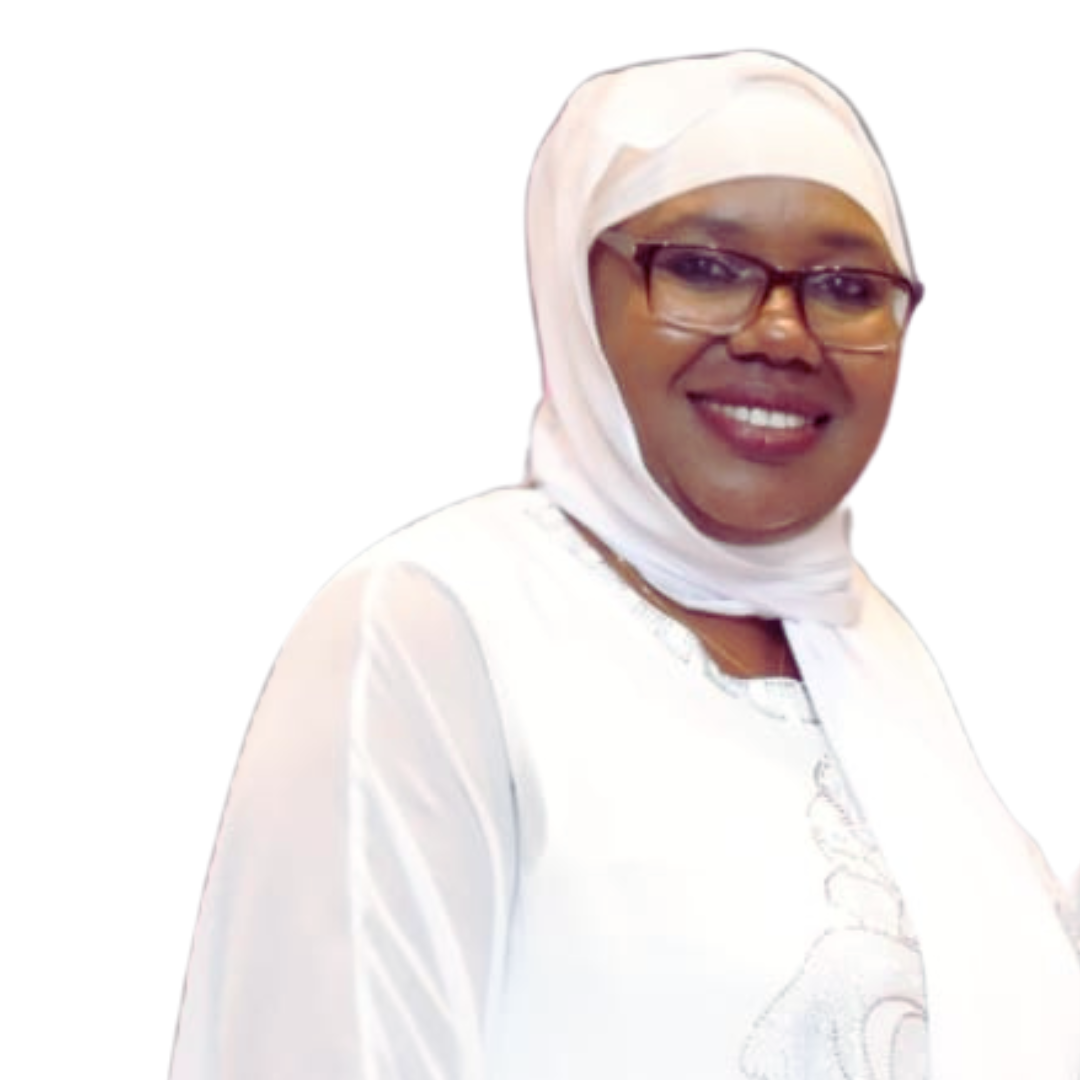
Fatuma Wario
Administrative & Events Coordinator
Fatuma Wario holds a Bachelor of Business Administration (BBA) from the Kenya Methodist University, a Higher Diploma in Human Resource Management and a Diploma in Business Administration and Management from Kenya Institute of Management.
Before, joining AATF she worked with FARM Africa Regional office in Nairobi as an administrative secretary for seven years, the Catholic Organization for Relief and Development – AID (CORDAID) for a period of one year and with GTZ for four years as an administrative assistant. Fatuma is responsible for general office management, management of transport services, and events organisation among other administrative duties. She is Kenyan.
Shehu Muhammad Dandago
Chief Agronomist
Shehu Muhammad Dandago has over 20 years of multi-disciplinary experience in both Industrial, public, private, and International non-governmental (NGO) organizations as Laboratory Analyst, Research Associate, Food Security, and Seed System Agronomist in both Emergency and Developmental programming.
He has a master’s degree in Agronomy from Bayero University Kano (BUK) Nigeria, Postgraduate Diploma in Environmental Management, and B.Sc. Degree in Applied Biology. Shehu is a Nigerian national.

Shey R. Tata
Member, Board of Trustees
Shey holds a BA in International Relations from Amherst College in Massachusetts, an MBA in Finance and Management from Yale University School of Management and a CPA from the University of Maryland USA.
Shey began his professional life working as a Team Leader and Senior Economic Development Specialist for a Private Public Partnership entity for economic development in Washington DC. He later joined the World Bank where he worked as a financial analyst. He later took leave from the World Bank and was appointed as the Interim Director of Finance for an International Agriculture Research Association for West Africa.
Shey later returned to the World Bank where he served under different positions leading teams and advising decision makers in fiduciary management, governance, institutional and program evaluation, administration, resource mobilization and outreach in Africa, Asia and the US. In recent times, Shey has also consulted and provided advice to international development (AfDB and IFAD).

Prof. Jennifer Ann Thomson
Board Chair Emeritus
Prof. Jennifer Thomson has a BSc in zoology from the University of Cape Town, an MA in genetics from Cambridge University and a PhD in microbiology from Rhodes University in South Africa. She was a post-doctoral fellow at Harvard Medical School and spent a sabbatical year at the Massachusetts Institute of Technology. She was a lecturer, senior lecturer and Associate Professor in the Department of Genetics at the University of the Witwatersrand in South Africa before starting and being the Director of the Laboratory for Molecular and Cell Biology for the Council for Scientific and Industrial Research. She then became Professor and Head of the Department of Microbiology at the University of Cape Town (UCT), a post she held for 12 years until the Department merged with the Department of Biochemistry. She is now Emeritus Professor of Microbiology in the Department of Molecular and Cell Biology at UCT. Her main current research interests are in the development of maize resistant to the African endemic maize streak virus (MSV) and tolerant to drought. The MSV work has been shown in glasshouse trials to give excellent protection and was the first transgenic crop developed in Africa, by Africans for an African problem. Other positions held in the past include the Deputy Dean of Science at UCT, chair and member of the South African Genetic Engineering Committee, co-founder and chair of SA Women in Science and Engineering, and Vice-President of the SA Academy of Science. She is a Fellow of the Royal Society of South Africa and of UCT and Vice-Chair of the board of the International Service for the Acquisition of Agribiotech Applications (ISAAA). She is a member of the National Advisory Council on Innovation which advises the Minister of Science and Technology and chairs the South African chapter of the Organization for Women in Science in the Developing World. Honours received include the L’Oreal/UNESCO prize for Women in Science and an honorary doctorate from the Sorbonne in Paris. She is a regular writer and speaker internationally on the subject of genetically modified organisms, especially crops and foods derived from them. These include addressing the World Economic Forum in Davos for two successive years, and the United Nations as the guest of Secretary General Kofi Annan. Her three books, Genes for Africa, Seeds for the Future and Food for Africa are geared towards the interested layperson.

Joanne Muthie
Digital Communications Officer
Joanne is an experienced Digital Media Specialist with a demonstrated history of working across integrated communication and marketing agencies in Africa. Joanne’s love for technology merged with communications has seen her pursue new skills and technologies in order to more effectively meet client needs towards business goals.
Joanne is a trained scientist who has honed her skills as an all-rounded digital communications specialist and brings onboard experience in social media strategy and community management, media buying on social media, search engines as well as local publishers’ engagement, use of influencers, and general digital partnerships.
Over the last decade, She has worked with Ogilvy Africa through their flagship 360 IMC Agency- Blueprint Africa and Oxygene MCL, a boutique marketing and communication agency servicing local and international brands such as KRA, KCB Bank, Safaricom, Radisson Blu, Simba Corp, JCG, Mondelez Africa, Ecobank, and WWF. Joanne is also passionate about digital media production through creative design, animations, websites/microsites, and mobile applications’ end-to-end project management. In addition, she brings insights and knowledge management through social listening and analytics. Joanne is a Kenyan national.
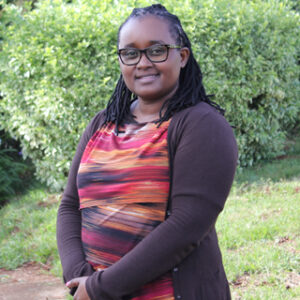
Josephine Mailu
Head, Human Resources
Josephine Mailu is a Human Resources practitioner holding an MBA in Human Resources and Strategic Management from Daystar University and a BBA in Human Resources Management from Kenya Methodist University.
Before joining AATF, Josephine worked with the International Medical Corps – Kenya, a non-profit relief and development organisation dedicated to saving lives and relieving suffering through health care training. Prior to that, she worked with Save the Children International, Somalia country office- an organisation focusing on children’s rights, AMURT International Kenya and South Sudan, and Palma Group.
Ms. Josephine Mailu has over 20 years’ experience in Human Resources Management in HR Strategy formulation and implementation, Organizational Effectiveness, Culture Transformation, Staffing and Recruitment, Succession Planning, Talent Management, Compensation and Benefits, Performance Management, Formulation of HR Policy & Procedure and Employee Relations.
Josephine is responsible for the human resource function at AATF. Josephine is Kenyan.

David Tarus
Program Officer – OFAB
David Tarus holds an MSc degree in Managing the Environment: Risk Assessment of GM crops from the Aberystwyth University, Wales, and University of Adeline, Southern Australia BSc (Hons) degree in Agricultural Education and Extension from the University of Nairobi, Kenya.
David also holds other professional training among them training in Intellectual Property and Technology Commercialisation from the University of California, Davis, USA, Project Planning, Management and Evaluation from the Institute for Capacity Development, Windhoek, Namibia, Certified Private Seed Inspector in Kenya, Lead Instructor for Preventive Controls for Human Food accredited by US-based Preventive Controls Alliance(FSPCA), Results Based Management training administered by Regional Centres for Learning and Evaluation of Results, Qualified ISO 9001:2015 on Quality Management Systems, Understanding and Implementation and Fertilizer Policy and Marketing Strategies in Africa.
Before joining AATF, David worked with the Ministry of Livestock and Fisheries Development, Trans Nzoia District, as an extension officer where he was instrumental in the implementation of both the National Agricultural and Livestock Extension Project (NALEP) and the Kenya Agricultural Productivity Project (KAP) in the district. David has extensive experience spanning over a period of 13 years in policy, program coordination, partnership management, and international policy and regulations having worked in partnership-based collaborations across Africa, mainly gained at AATF in different project leadership and coordination roles involving multiple partners and stakeholders.
Working with partners, he has provided strategic leadership in several regional collaborative efforts in the development sector. He has been consulted by the Centre for Genetic Engineering and Biotechnology (ICGEB) under the auspices of its Biosafety Capacity Building Project for sub-Saharan Africa as an expert and adviser in bio-regulatory issues. Previous roles at AATF involved coordinating efforts in seed sub-sector policy and regulatory improvement in six countries of Africa, implementation of policy on use of bio-fertilizers and bio-pesticides in six countries of Sub-Sahara Africa, and facilitation of regulatory aspects of aflatoxin control in maize and peanuts project in conjunction with United States Department of Agriculture (USDA)-Foreign Agriculture Service (FAS) and COMESA. David also coordinated food safety capacity enhancement efforts involving the private sector, regulators and policy makers, an effort that was implemented in Eastern and Western Africa. David is a Kenyan national.

Prof. Aggrey Ambali
Chair, Board of Trustees
Prof. Aggrey Ambali is currently serving as Head of Science, Technology and Innovation Hub (NSTIH) at the New Partnership for Africa’s Development (NEPAD) Agency, where he oversees the development and implementation of programs in education, health, and science and technology. He has also served in other positions at the NEPAD Agency, including Director of Policy Alignment and Program Development, Coordinator of the African Biosciences Initiative, and Coordinator of Science and Technology for the Southern Africa region.
He has been actively involved in science, technology and innovation programmes of the African Union.
He coordinated the work of the African Union High Level Panel on Science, Technology and Innovation which was appointed in July 2012 and mandated to prepare a ten-year African Union Science, Technology and Innovation strategy for Africa, 2014- 2024 (STISA 2024). Outside the NEPAD Agency, he served as an external member of Governing Council of the University of Namibia, and member of the Innovation Council of the Common Market for Eastern and Southern Africa (COMESA).
He serves on several committees including the Technical Advisory Committee of the Biosafety Program of ICGEB, Chair of the Management Committee of the African Biosafety Network of Expertise (ABNE), member of the Advisory Panel of the Biosciences Eastern and Central Africa (BecA), etc.
Prof. Aggrey Ambali is currently coordinating the process of establishing a high-level African Union panel on harnessing emerging technologies for Africa’s development. He obtained a PhD degree in Population Genetics from Dalhousie University, Canada, Masters of Science in Aquaculture from Asian Institute of Technology, Thailand and Bachelor of Science in Agriculture from University of Malawi.
He served as a faculty member at the University of Malawi where he became a Professor of Biology in 2003.

Dr. Boniface K. Kaberia (Ph.D.)
Member-Board of Trustees
Dr. Boniface K. Kaberia (Ph.D.)
Dr. Kaberia is the current Senior Technical Advisor to Kenya’s Cabinet Secretary for Agriculture and Livestock Development. He also sits on the National Technical Committee (under the Principal Secretary State Department of Livestock Office) which is developing the livestock master plan to actively champion meat industry modernization and consumer safety assurance through industry bodies.
Dr. Kaberia is a seasoned expert in food security and livestock development. He has over 25 years of experience in leadership and senior management positions in development and non-governmental organisations across East Africa, Guinea Conakry, Mali, and Ethiopia.
Prior to his appointment as Senior Technical Advisor, Dr. Kaberia was the Chief of Party/Livestock Advisor for the $25 million Feed the Future Flagship project funded by USAID. He also oversaw the ACDI VOCA-implemented Resilience and Economic Growth in the Arid Lands – Accelerated Growth (REGAL-AG) project in Kenya. During this time, the REGAL-AG project received USAID head office recognition for outstanding performance in its implementation.
He also served as Livestock Sector Manager for Kenya Markets Trust (KMT), where he is credited with the revision of the KMT’s livestock sector vision to align it with Kenya’s livestock industry’s much-needed systemic transformation as a major contributor to the country’s economic growth and source of job creation.
Dr. Kaberia’s other previous positions include serving as the Regional Coordinator, Winrock International for the USAID-funded Farmer-to-Farmer programs in Kenya, Ethiopia, Mali, and Guinea supporting country offices to mainstream value chain and market systems development approaches to the programs. During this period, Dr. Kaberia established the Winrock International Country Office in Ethiopia and assisted in talent recruitment including that of the Country Director. Prior to this, he was the Program Manager for USAID-funded Partnership for Safe Poultry in Kenya Project under Winrock International. In addition, Dr. Kaberia was instrumental in pioneering FARM-Africa’s Sidai Animal Health franchise model which currently operates in Kenya and was supported by the Bill and Melinda Gates Foundation.
Dr. Kaberia, a Kenyan national, holds a Ph.D. in International Rural Development from the University of Reading in the United Kingdom, and a Bachelor of Veterinary Medicine from the University of Nairobi, Kenya. In addition, he holds certification in Veterinary Epidemiology and Economics and has many publications to his credit.
Love Unini Adegbola
Administration Assistant – Abuja
Love Unini Adegbola is an Associate Member of the Chartered Institute of Personnel Management of Nigeria(CIPM) and an Associate Member of the Nigerian Institute of Management (NIM). She holds a Bachelor’s Degree in History & International Studies (Second Class Upper) from Kogi State University and is currently pursuing an MBA degree from the National Open University of Nigeria.
Before joining AATF, Love worked as Administrative Officer/ Corporate Social Responsibility Champion for Grant Thornton Nigeria (World’s 7th largest accounting network) for over 6 years. She has also volunteered for the World Health Organization in Nigeria as well as other local NGOs.
Love is well vast in general administration, procurement & logistics, event planning, and human resources management.
At AATF, Love Adegbola is responsible for general office management, assets management, management of transport services, and events organization among other administrative duties.
She is a Nigerian National.
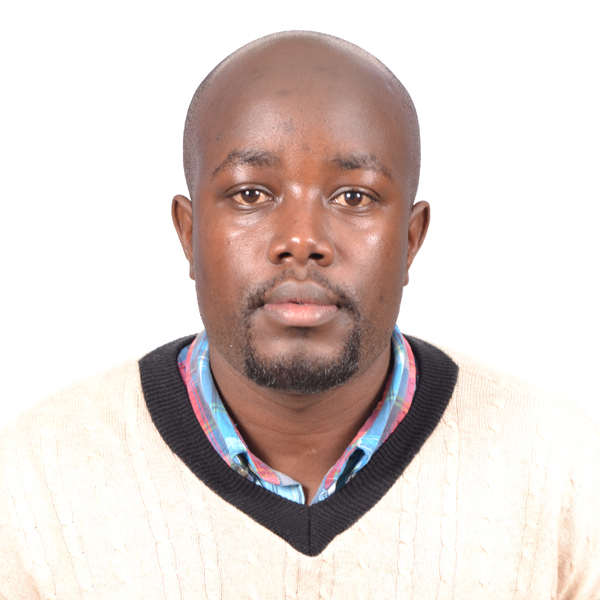
Verenardo Meeme
Program Officer – Open Forum on Agricultural Biotechnology Technology (OFAB)
Verenardo Meeme is a passionate development communication specialist with over eight year’s professional experience in science journalism, knowledge management, media training and media management. Meeme is currently a programme officer, Open Forum on Agricultural Biotechnology Technology (OFAB), at the African Agricultural Technology Foundation (AATF).
Before joining AATF, Meeme worked as a communication and knowledge management programme officer at Kilimo Trust, a not-for-profit organization working on agriculture for development across East Africa. He has also been the Kenya correspondent for Cornell Alliance for Science that seeks to promote access to scientific innovation as a means of enhancing food security, improving environmental sustainability, and raising the quality of life globally.
Meeme previously worked at Rootooba Limited as a communications specialist and was the founding editor of PanAfrican Agriculture magazine. He was also involved in Rootooba’s knowledge management engagement with the International Finance Corporation (IFC) Food safety programmes. Before joining Rootooba, he worked as a multi-media practitioner at SciDev.Net, an online platform that brings science and global development together through news and analysis, and at Citizen Television’s online desk as an assistant editor.
He also worked at the International Service for the Acquisition of Agri-biotech Applications as a communications consultant, and at the National Cohesion and Integration Commission as a cohesion monitor. Meeme was a lead consultant in the design and implementation of several NGO initiatives inclined to science-based communications for varied clientele and has produced documentaries for Kenya’s Ministry of Agriculture.
He has published over 200 articles focusing on biotechnology and biosafety online and in the print media. He formerly served as an advisor to the Meru County Member of Parliament on media relations, messaging, branding, and political communication strategies. He is the current Kenya Environment and Science Journalists Association (KENSJA) organizing secretary.
Meeme was named Open Forum on Agricultural Biotechnology’s 2019 overall winner for excellent science journalism and finalists in Africa and is a 2018 Cornell Alliance for Science Global Leadership Fellow. He holds a master’s degree in communication studies with a specialization in development communication from the University of Nairobi, a bachelor’s degree in communication and public relations from Moi University, a diploma in journalism from the Kenya Institute of Mass Communication and a Global Leadership Fellowship certificate from Cornell University, USA. Verenardo is a Kenyan national.
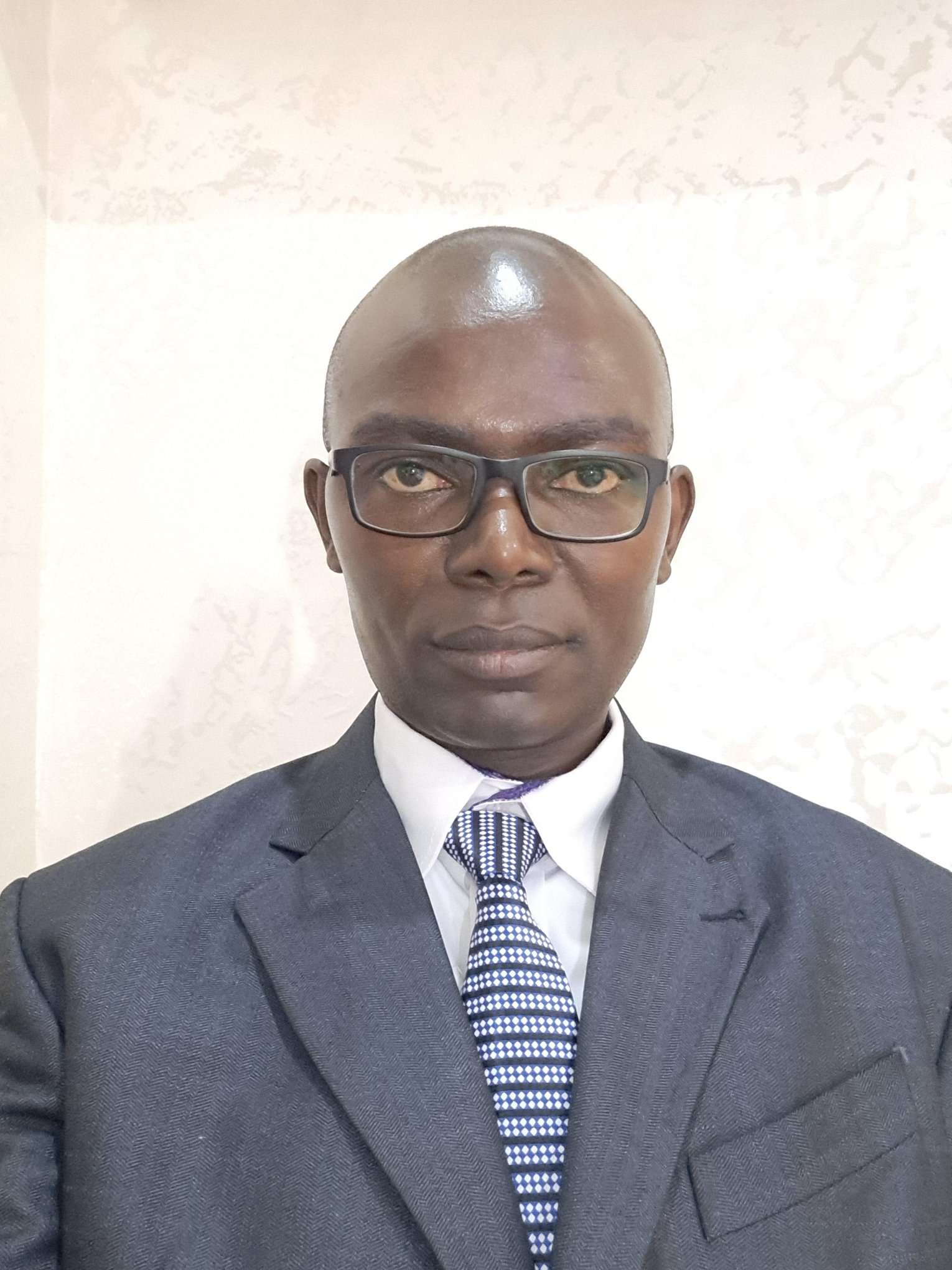
Erasmus Mwangi
Budget and Grants Management officer
Erasmus Mwangi holds an MBA (Finance) and a B.Com(Accounting), both from the University of Nairobi. He is also Certified Public Accountant and a member of ICPAK.
Prior to joining AATF, Erasmus worked at the Innovations for Poverty Action (IPA) as a Grants Specialist, where he supported the budgeting, grants administration, compliance and reporting functions for 100+ grants from major international donors including The Gates Foundation, World Bank, Give Directly, GIZ and major European and American Universities. Before joining IPA, Erasmus worked as a consultant in Kenya and Zimbabwe where he provided grants and financial consultancy services to various Non-Profit bodies. Erasmus also gained extensive sub-grants management experience while working at Pricewaterhouse Coopers (PwC) as a Regional Grants and Finance Officer in the Total War against Aids (TOWA) Project.
As the Budget and Grants Management officer, Erasmus oversees the budgeting, expenditure and compliance processes across the AATFs grantees who are spread across 23 African countries. He guides the preparation of, and adherence to institutional budgets as well as the partners’ project budgets.
Erasmus is a Kenyan national.

Prof. Bernard Slippers
Member, Board of Directors
Bernard Slippers is the Director of the Forestry and Agricultural Biotechnology Institute (FABI) and the Tree Protection Co-operative Programme at the University of Pretoria.
He is a Professor in the Department of Biochemistry, Genetics, and Microbiology. Bernard’s research focus is on the ecology, evolution, and management of insects and fungi that affect plant health. He uses genetic, genomic, and chemical tools to characterize patterns of diversity and the global spread of invasive plant pests and pathogens, as well as their population dynamics, communication systems, mating strategies, and community structures.
Bernard is committed to capacity development and has acted as supervisor or co-supervisor to more than 100 postdoctoral researchers, Ph.D. and MSc students. Bernard is also passionate about the transformation of science in Africa (and beyond) towards a more transdisciplinary and competitive system with a greater impact on society. Much of this has been done through his active involvement with Academies and the global Young Academy movement. He is a founding member and past co-chair/executive committee member of both the Global Young Academy and the South African Young Academies of Science.
With these and other collaborators, he has also been involved in various projects to advance Young Academies and development of research capacity. A prominent example is the Africa Science Leadership Programme (ASLP), amongst others.
Bernard is also the Founding Director of Future Africa at the University of Pretoria, a transdisciplinary research network hub and campus, and currently leads a university-industry-government research investment platform called Innovation Africa @UP.

H.E. Prof. Muhammadou M.O. Kah
Member,Board of Trustees
His Excellency Professor Muhammadou M.O. Kah is the Ambassador & Permanent Representative of The Gambia to the UN Office in Geneva, World Trade Organisation (WTO), and other offices in Geneva.
He currently Chairs the Africa Group of Ambassadors in Geneva (April 2021-June 2021) and is the Vice Chair for UNCTAD’s Commission on Science and Technology Development’s 25th session and a member of the Advisory Board of the UNCTAD TDB Advisory Body (June 2021-July 2022). Ambassador Prof. Kah is also one of three Ambassadors designated as Friends of the Chair of the World Intellectual Property Organisation (WIPO) General Assembly.
Prior to his appointment in Geneva, Professor Kah served as the Founding Chairman of Zenith Bank, The Gambia, Chairman of the Board of Directors, of Africa Consulting & Trading Group (ACT), Dakar, Senegal, and as the first Gambian-born third Vice-Chancellor of The University of The Gambia (UTG) from 2009- 2015 and recently appointed as a Visiting Professor at the Faculty of Humanities, University of Johannesburg, South Africa.
Prior to becoming UTG’s Vice Chancellor/Rector in 2009, Professor Muhammadou M.O. Kah spent 4 years in Nigeria as the Founding Dean of the School of Information Technology and Communications at the American University of Nigeria (AUN) where he doubled for a year as Interim Dean of the School of Business & Entrepreneurship. Professor Kah was appointed as Vice President of Academic Affairs & Provost (DVC) and Professor of Information Technology & Computing at the American University of Nigeria, Yola, Adamawa State (2017-2020). He also served as Vice Rector for Technology & Innovation; Professor and Founding Dean of the School of Information Technology & Engineering at ADA University in Baku, Azerbaijan (2015-2017). He served on the Board of Trustees and Governing councils of the American University of Nigeria and the African University of Science and Technology, Abuja, Nigeria.
Professor Kah has held teaching and leadership positions in the USA, Africa, the Middle East (Gulf countries), and Eastern Europe (Caucuses). A regular contributor to the “Africa Module” in the Advanced Leadership Program (ALP) at Cambridge Judge Business School, he was appointed as an honorary Fellow of the Judge Business School and the Digital Innovation Centre, University of Cambridge (2016-2017). Professor Kah is passionate about advancing and strengthening computing, engineering, science, and leading strategy & innovation in organizations. To complement that he also provides thought leadership in information technologies & computing education in higher education whilst also serving as a member of international panels such as the Malabo Montpellier Panel, the Euro Science Forum 2018, and the Africa Europe Foundation, amongst others.
Completing his BSc, MSc. and Ph.D. at the Stevens Institute of Technology, Hoboken, New Jersey, one of the top engineering and technology management universities in the USA, Professor Kah also holds a Master of Science in Finance (Financial Engineering) from George Washington University, Washington, DC and a Postgraduate Diploma (Dip SI) in Strategy and Innovation from the Said Business School, University of Oxford, UK.
Professor Kah has completed several Executive Education Programs: University of Cambridge, Judge Business School: the Advanced Leadership (ALP) Program; Advanced Leadership Re-Union & Follow-Up Program in Singapore and Beyond Innovation: Business Models for Transformation & Competitive Advantage; Harvard University, Harvard Kennedy School: Transforming Leadership for 21st Century Africa, and The AGA KHAN University, Graduate School of Media & Communication: The Voice of Leadership; Inspiration, Influence & Impact. In Corporate Governance, he has completed the highly reputable International Directors Program (IDP) as an Internationally Certified Director from INSEAD, through the INSEAD Singapore and Fontainebleau, France, Campus. Professor Kah is also a member of the Institute of Directors (IoD), in London, UK.

Kehinde Saheed Jimoh
Program Officer-Seed Systems and Agribusiness
Kehinde Saheed Jimoh has over ten years of multidisciplinary experience in agricultural market systems, agricultural value chain development, and seed systems. He has a master’s degree in Economics from the University of Lagos, Nigeria, and a bachelor’s degree in Agriculture from Olabisi Onabanjo University in Ogun State, Nigeria.
Prior to joining AATF, he worked with the National Agricultural Seed Council (NASC) on secondment from the Federal Ministry of Agriculture and Rural Development (FMARD) and he worked with a cross departmental team to implement actions on Nigerian seed industry development and strengthening of operations and administration of seed activities in Nigeria. At FMARD, he worked at the office of the Honorable Minister of Agriculture and Rural Development from 2014-2016 appraising the impact of government and donor sponsored programs on beneficiaries and with the Root and Tuber Division, Federal Department of Agriculture, where he worked directly with cassava farmers and SMEs providing technical guidance on market intelligence, post-harvest handling and value addition.
Kehinde has considerable experience working with donor funded projects such as Bill and Melinda Gates funded Cassava bread Initiative in Nigeria (2012-2014) and the Gates Foundation sponsored Building an Economically Sustainable Integrated Cassava Seed System, BASICS (2015-2025). In 2021, he worked as a part-time consultant for USW, the export market development organization for the U.S. wheat industry, to assist the organization in increasing brand awareness in Nigeria.
As Program Officer-Seed Systems and Agribusiness at AATF, Kehinde is responsible for assisting in the project management, coordination, reporting, and accountability obligations of the Early Generation Seed (EGS) Nigeria Project. He is a Nigerian citizen.
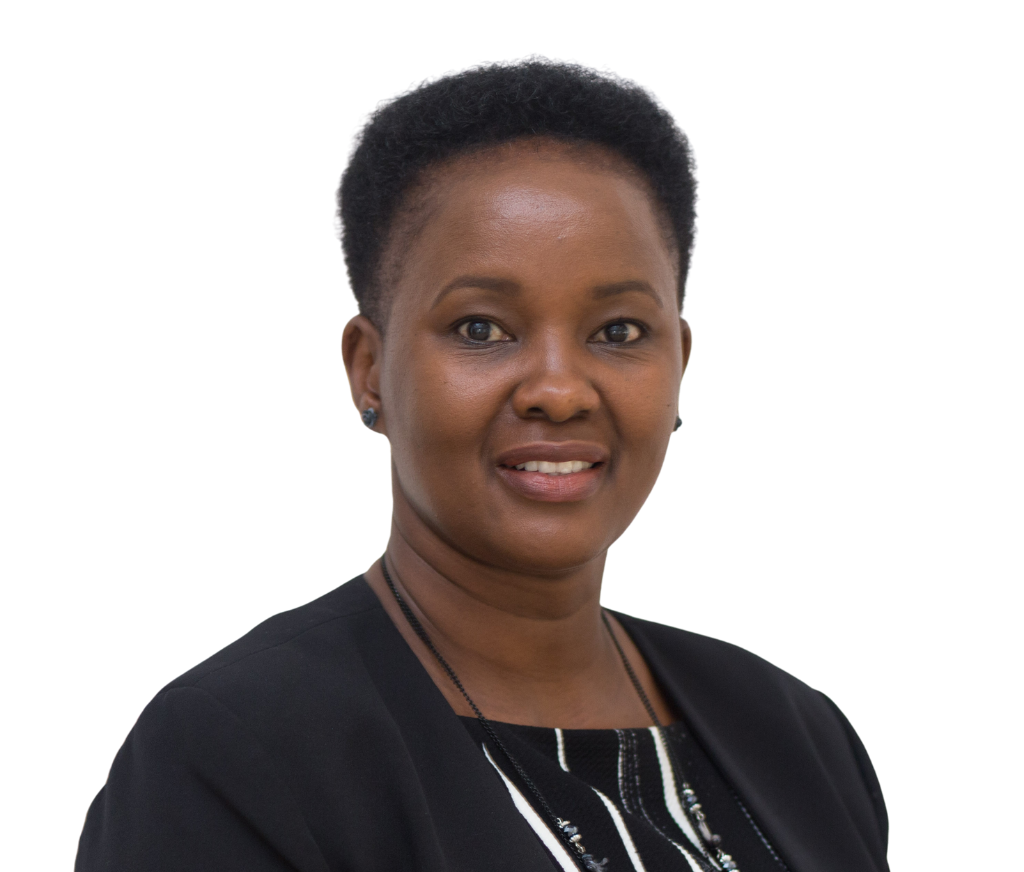
Jacquine Kinyua
Executive Officer
Jacquine Kinyua has training in business administration and public relations. Before joining AATF, she worked with East African Foundry Works Group of Companies for ten years as an Executive Secretary to the Directors and as the Office Services Manager. Prior to that she worked with General Motors (K) Ltd in the Personnel Department for a period of one year; and with United Touring Company/Hertz Car Hire company for a period of less than one year. Jacquine is a Kenyan national.
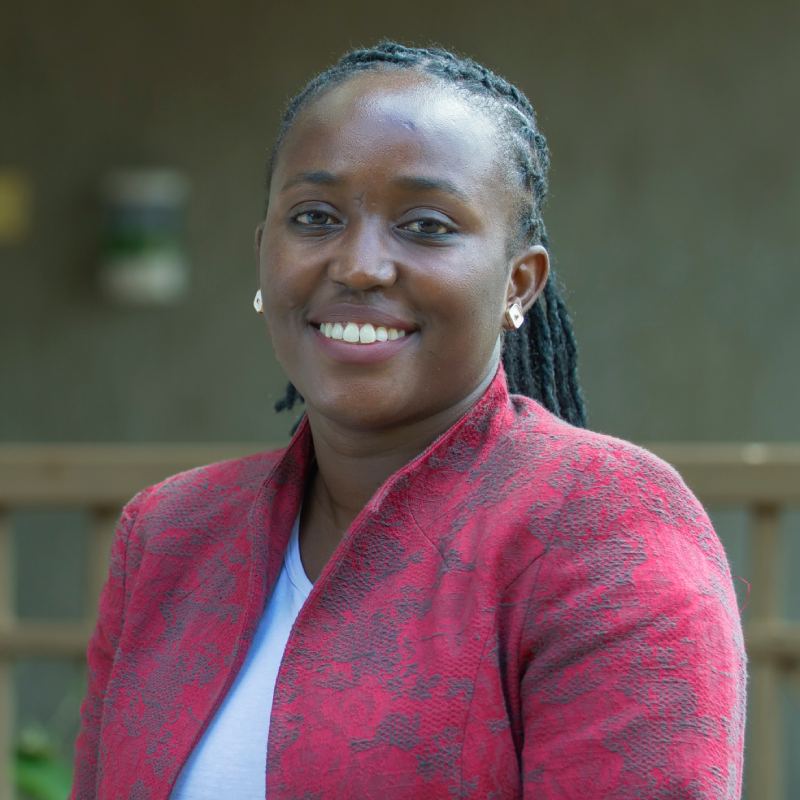
Joyce Njuguna
Monitoring Evaluation & Learning Officer
Joyce is a dedicated Monitoring, Evaluation and Learning specialist with extensive experience in food systems and agripreneurship projects. Cumulatively, she has over 10 years working experience and has developed sound expertise in designing MEL plans, conducting evaluations, result based management and producing quality reports with best practices and lessons learnt. Through her MEL work, Joyce has over the years gained extensive involvement in stakeholder engagement from both private and public sector ranging from agro input service providers, off takers, financiers, Non-Governmental Organization. This is through improving output rates by enforcing and monitoring practices, policy and results. Joyce is skilled at combining qualitative and qualitative analysis with excellent communication skills to relay information for improvement and process changes and drive overall organization goal. Joyce holds a Masters degree in Agricultural Economics and Resource Management. She is a certified MEL practitioner and a certified public accountant (CPA K).
Previously, Joyce worked with Cereal Growers Association as the MEL lead and further as the project manager for the Farm to Market Alliance (FtMA) program funded by World food Programme. While at CGA, she led MEL initiatives under different donors such as AGRA, USAID, GIZ among others. Joyce led a team of 30 experienced county Agribusiness Coordinators, working with over 700 rural agri-preneurs known as Farmer Service Centers (FSCs). These FSCs served well over 125,000 small holder farmers in Kenya.
At AATF, Joyce is responsible for providing MEL leadership in terms of development and optimization of the MEL Strategy that measures program-wide performance and achievements towards outcomes (using the Outcomes & Impact Framework core indicators and other methods as appropriate) including roll-out of new MEL related initiatives. Joyce is a Kenyan National.

Francis Onyekachi Nwankwo
Product Stewardship Manager
Francis Onyekachi Nwankwo is an action researcher with 11 years of practical quest to contribute to strengthening the livelihood of smallholder farmers by helping to increase their agricultural productivity and competitiveness thereby reducing hunger and poverty. He holds a B.Agric (Animal Science and Animal Health) from the University of Agriculture, Umudike, Nigeria, and a Masters in Human Development and Food Security from the University of Rome (Roma Tre). Before joining AATF, Francis worked for the International Fund for Agricultural Development (IFAD); the Food and Agriculture Organization of the United Nations (FAO), the Ministry of Agriculture in Nigeria, and the National Association of Nigerian Traders, among other NGOs. Francis served in the ECOWAS Scientific Committee for the second ECOWAS Development Report and also worked as a consultant/resource person to the European Commission/Pro€Invest and the UN Women. At AATF, Francis is Product Stewardship Manager. Francis is a Nigerian national.
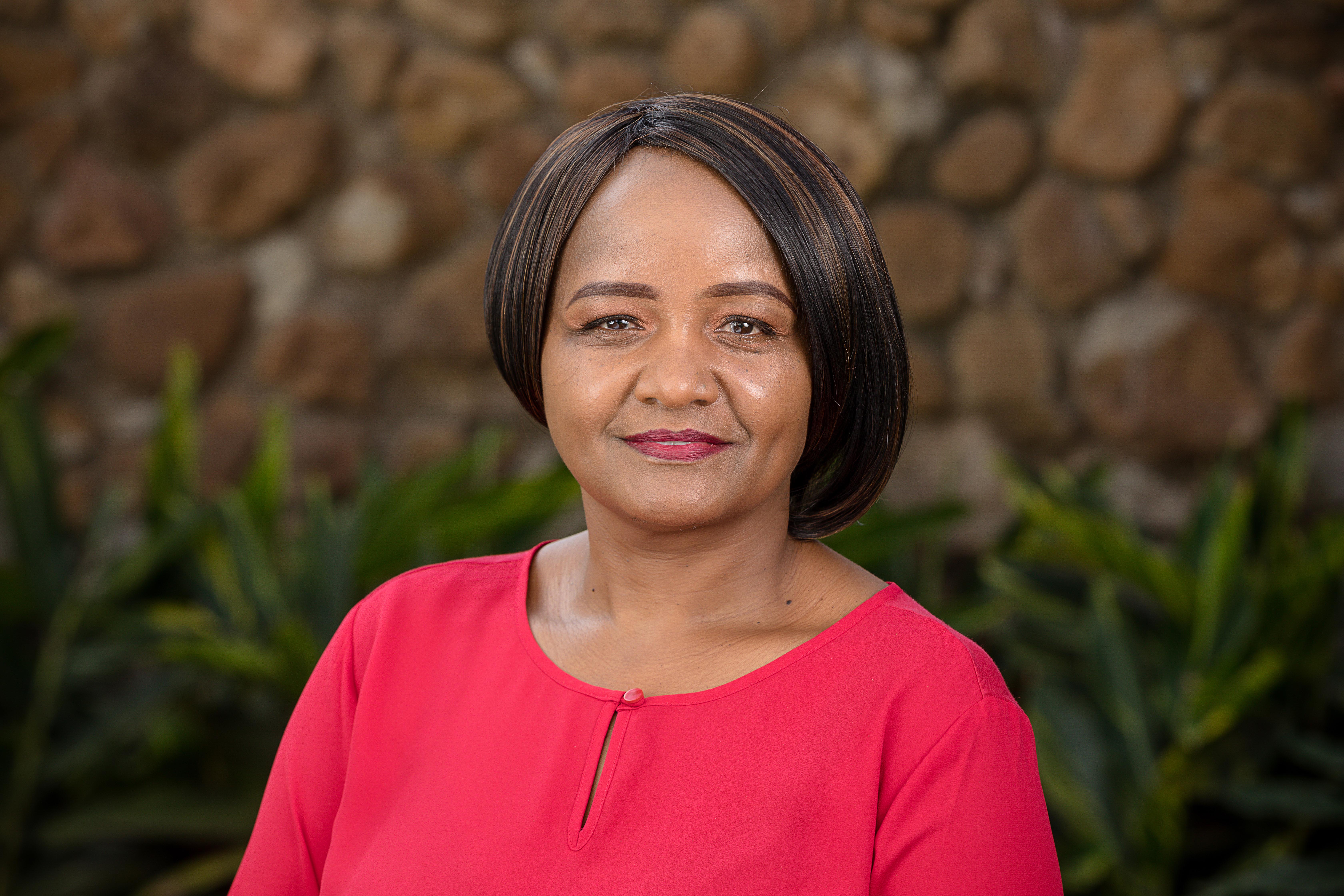
Grace Mukasa
Resource Mobilization Officer
Grace is a communications specialist with over 15 years’ working experience in diverse sectors including agriculture and health.
Prior to joining AATF, she worked as an independent consultant since May 2017 where she provided communications support including resource mobilization for both public and private sector clients. She previously worked with Merck Health Care and Life Sciences, Kenya as a Communications Manager from 2015 to 2017. Prior to that, she was the Corporate Communications Officer at AATF from 2011 to 2015 and the Project Communications Officer – WEMA Project from 2008 to 2011. She also served as the Publications Editor for the Institute of Policy & Research, Kenya from 2004 to 2008.
Grace holds an MA in Gender and Development and a Postgraduate Diploma in Mass Communications from the University of Nairobi and a BSc. Information Sciences from Moi University. Grace will be applying her knowledge and experience in communication to support AATF’s Resource Mobilization initiatives. Grace will double up as the AATF editor and provide administrative services to the AATF consultancy arm. Grace is a Kenyan national.

Prof. Garba Hamidu Sharubutu
Member, Board of Directors
Prof Garba Hamidu Sharubutu is the Executive Secretary of the Agricultural Research Council of Nigeria. He is a specialist in Infectious Diseases of Livestock and Veterinary Legislation. A Native of Kwande, Qua’an – Pan Local Government Area of Plateau State, Garba Sharubutu was born on June 19, 1961. He attended St. John Vianney’s Transferred Roman Catholic (RCM) Primary School, Kwande; Government Secondary School (G.S.S.) Shendam; and the Plateau State School of Preliminary Studies (SPS) in Keffi, Nassarawa State.
Hamidu Sharubutu obtained a Doctor of Veterinary Medicine (D.V.M) degree from Ahmadu Bello University (A.B.U), Zaria in 1986; a Masters of Veterinary Science (M.V.Sc) degree from the University of Ibadan in 1992; and a Ph.D. from Usman Dan Fodiyo University Sokoto in 2002.
Prof. Sharubutu began his public service career in the Federal Livestock Department that same year (1987), subsequently joining the services of Usmanu Dan Fodiyo University as Assistant Lecturer in 1991 and rose to the rank of a Professor in 2005. He held numerous positions including Complex Co-ordinator of City Campus Complex of the University; Chairman, ASUU UDUS branch; Dean Faculty of Veterinary medicine; and Chairman of many sensitive University Committees.
He has earned numerous awards including the Presidential National Youth Service Corp (NYSC) Honours in 1987 and nurtured many talents across the agricultural research sector. A seasoned professional, he is no novice in the academic, administrative and managerial sphere, and he is well published.
Prior to his appointment as the Executive Secretary on 16th April, 2020, he acted in that position between September 2019 – April, 2020. Prof. Sharubutu has also held several positions in the public sector including National President, Nigerian Veterinary Medical Association (2005 – 2009); President of Veterinary Council of Nigeria (2013 – 2017); Provost, Federal College of Animal Health and Production Technology, Vom (2014 – 2018). He is an alumnus of the National Institute for Policy and Strategic Studies, where he also served as the Monitor General of SEC 35, 2013.

Alhaji Tejan-Cole
Director of Legal Affairs/Legal Counsel
Alhaji Tejan-Cole holds a LL.M degree in Legislative Drafting (including Constitutional/Administrative Law) from the University of the West Indies and a LL.M degree in Intellectual Property Law (including Competition Law) from the University of South Africa. He has served as Legislative Counsel in Sierra Leone and in the Caribbean nation of Belize.
In 2003, he was appointed as Deputy Registrar for Intellectual Property in Belize, a position which he held until his appointment with the African Agricultural Technology Foundation. Alhaji has also served as legislative drafting consultant for the World Intellectual Property Organization. In addition to legislative drafting and intellectual property management, his other areas of experience include contract drafting, technology transfer, corporate governance and legal compliance. He is a citizen of Sierra Leone.

Djimé Adoum
Member, Board of Directors
Djimé Adoum is the High Representative for the G5 Sahel Coalition. He has also served as the Executive Secretary of the Permanent Interstates Committee for Drought Control in the Sahel (CILSS) and former Minister of Agriculture and Irrigation of Chad. He has 25 years of professional experience in international development, especially in Sub-Saharan Africa. As an agronomist, Djimé has occupied various positions in the field of research, agricultural extension, communication and strategy in the design of development programs in several countries, from South Africa to Egypt through Senegal, Ethiopia, Kenya, Cameroon, USA and Chad. He has worked for international organizations such as the World Bank and USAID, as well as for research institutes and in the implementation of development strategies. Before his tenure as minister, he served as a technical advisor to President Idriss Deby Itno of Chad. He holds a graduate degree in Agronomy, specifically in crop production and statistics, and a PhD in agronomy and agricultural extension from the University of Maryland.

Sofia Tesfazion
Director Resource Mobilisation
Sofia Tesfazion holds a Master’s degree in International Business Administration and Economics from Uppsala University in Sweden and a Certificate in Change Leadership from Cornell University, USA. She has over 22 years of diverse experience in the private and development sectors from three continents, Europe, USA and Africa. Sofia started her career in SCA (Svenska Cellulosa Aktiebolaget) a multinational company headquartered in Sweden that produces and sells absorbent hygiene products, packaging solutions and publication papers. She then moved to New York working for Towers Perrin, a global professional services firm that helps organisations around the world optimise performance through effective people, and risk and financial management – servicing clients that include three-quarters of the world’s 500 largest companies and three quarters of the Fortune 1000 U.S. companies. Sofia has been based in Nairobi over the last 13 years in regional management roles in resource mobilization, program development and grant management for Save the Children and Plan International. Before joining AATF, she was the Regional Head of Resource Mobilisation for Plan International covering 12 countries in Eastern and Southern Africa. In AATF as Director Resource Mobilisation she provides strategic leadership in the area of resource mobilisation. Sofia is an Eritrean and Swedish national.

Kayode Abiola Sanni
Rice Project Manager
Kayode Abiola Sanni has over 20 years experience in agricultural research and development, science and technology, leadership in genetics, plant breeding, genetic resources and project management. He has greatly contributed to research towards food security in Africa through management of genetic resources, varietal development, registration, release and dissemination. Kayode holds a PhD in Plant Breeding from the Federal University of Agriculture, Abeokuta, Nigeria, an MSc in Environmental Genetics and a BSc in Agriculture (Soil Science) both from the University of Ibadan, Nigeria. His PhD work was focused on New Rice for Africa (NERICA) and he serverd as a Postdoctoral Fellow as molecular biologist at the Genetic Diversity and Improvement Program of Africa Rice Center (AfricaRice). Prior to joining AATF, Kayode was the Head of Genetic Resources Unit and the Coordinator of International Network for Genetic Evaluation of Rice in Africa (INGER-Africa) at AfricaRice, where he led and managed the collection, conservation and utilisation of rice genetic resources. He was the lead scientist for the international rice evaluation and varietal release program cutting across 30 African countries, which led to the registration and release of rice varieties in the different countries. Kayode served as the focal point of AfricaRice at several levels such as, the International Treaty on Plant Genetic Resources for Food and Agriculture and all issues relating to genetic biodiversity and Intellectual Property Rights. He took active part in multi-country donor-funded projects at AfricaRice. He also provided technical backstopping to national research scientists in Sub-Saharan Africa, and supervising post graduate students. He played a significant role in the establishment of varietal release system in the republic of Benin and was part of the committee that compiled the rice component of the first varietal catalogue of the country. Prior to that Kayode worked at the International Institute of Tropical Agriculture (IITA), Ibadan, Nigeria, in various capacities, firstly with the Maize Breeding Program and later with the Genetic Resources Center, where he worked on the Genetic profiling of three of the IITA mandate Crops. Kayode participates in the crop technical sub-committee of the National Varietal Release Committee of Nigeria as an international expert on rice. He has published heavily in scientific journals, conference papers, books and book chapters, posters, flyers, bulletins. As the Project Manager Rice, he provides overall leadership to the research and product development of the rice projects – translating strategic aims into achievable plans, establishing priorities, and ensuring the integration of technical, legal, communication, regulatory, and product deployment elements of the projects. Kayode is a national of Nigeria.
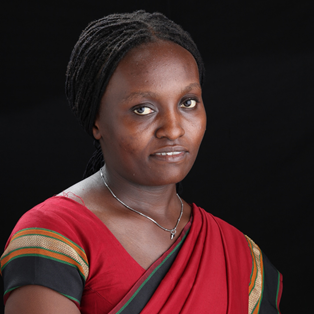
Millicent Sedi
Program Officer-Agribusiness Development
Millicent .A. Sedi holds a master’s degree in Agribusiness Management (Finance and Marketing option) from Kerala Agricultural University, India. She also holds a Bachelor of Science degree in Animal Production from Egerton University, Kenya.
Millicent Sedi is an agricultural value chain and market systems development expert with more than 8 years of progressively responsible experience in the management and implementation of food and agricultural development activities with smallholder farmers within the Kenyan context. She has a vast understanding of agricultural market systems and supporting private and public sector actors to invest in long term relationships with smallholder farmers for structured crop and dairy production.
She has worked as a Program Manager, PREG lead, Business Development Specialist, Business Advisor, sales executive for USAID, USDA, FORD Foundation and private firms funded programs. Millicent has wide experience in the agriculture sector that includes strategic management and leadership, financial analysis of businesses, financing, and market linkages, overseeing gender inclusivity and working with Communities on Journey to Self-Reliance. As a Program Officer-Agribusiness Development, Millicent is responsible for providing technical support on Agribusiness Development, Gender Mainstreaming, conducting baseline and feasibility studies, and drafting concept notes, business plans, market, and impact assessment for all AATF projects.

Peter Mugambi
Director, Corporate Services
Peter Mugambi holds an MBA from the University of Nairobi and professional accounting qualifications. Peter has extensive finance and operations experience, having worked at various international organizations for over fifteen years at different management levels. Before joining the AATF, he worked in Jhpiego Corporation as Finance and Administration Director, managing a substantial donor funding portfolio. Peter has also worked for CNFA, CARE International, Oxfam GB, and General Motors. He has provided specialist finance, operations, and compliance support to various organizations within Africa, Asia, and the Caribbean. Peter is an innovative problem solver and works to create motivated, agile and collaborative teams. Peter is a Kenyan national.
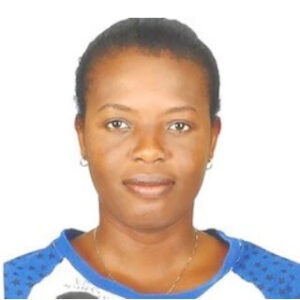
Ijeoma Akaogu
Program Officer- COWPEA
Ijeoma Akaogu is a seasoned scientist in plant breeding, genetics, and biotechnology with a good background in agronomy. She has over 10 years working experience across international and national organizations in Africa. Ijeoma holds a Ph.D. in Plant Breeding and Genetics from the West Africa Center for Crop Improvement (WACCI), University of Ghana, Legon Accra, M.Sc in Agronomy from the University of Ibadan, Oyo State, Nigeria, and B.Sc in Plant Science and Biotechnology from Imo State University, Owerri, Nigeria. She was one of the Alliance for a Green Revolution in Africa (AGRA) scholars for both her M.Sc and Ph.D degrees. Also, she was one of the 2016/2017 Norman Borlaug Leadership Enhancement in Agricultural Program (LEAP) fellows at Cornell University Ithaca New York where she conducted research on the identification of the quantitative trait loci (QTLs) for Striga hermonthica in tropical maize lines. Before joining AATF, Ijeoma worked at the National Biotechnology Development Agency Abuja (NABDA), an organization saddled with promoting and coordinating biotechnology products, research, and development in Nigeria. Prior to that, she worked with the International Institute of Tropical Agriculture (IITA) under the Maize improvement unit as a research fellow where she had developed and commercialized some maize varieties in West Africa. Ijeoma was also a visiting scientist in the Institute of Biotechnology at the Cornel University, Ithaca, New York, USA. She brings on board a blend of experience in Agricultural Research, Commercialization and varietal release, design of breeding experiments, regional and international trials management, food and nutrition security. She is the Program officer for the pod borer resistant (PBR) cowpea project at AATF. Ijeoma is a Nigerian national.

Moses Taiwo Ajireloja
Programme Officer- Seed Systems
Moses Taiwo Ajireloja is an excellent seed specialist with sound knowledge of seed production and seed systems, together with experience in promoting agricultural innovations (especially improved seed varieties) that can help smallholder farmers to become more productive, profitable, and sustainable. Moses holds a Master of Philosophy (M.Phil.) Degree in Seed Science and Technology, and a Bachelor of Agriculture (B.Agric.) Degree in Crop Production and Protection, both from Obafemi Awolowo University, Nigeria. He is also an alumnus of The SDG Academy where he participated in a comprehensive course on ‘Feeding a Hungry Planet: Agriculture, Nutrition, and Sustainability’. Moses also holds a Diploma in Computer Science, and he had been a participant in several online courses including project management, monitoring and evaluation, advocacy, and digital technology. Prior to joining AATF, Moses was the Coordinator and Lead Developer of the Nigerian Seed Portal Initiative where he was responsible for facilitating the development of the seed portal and promoting the adoption of improved seed varieties towards boosting agricultural productivity and improving the livelihoods of smallholder farmers. As a Programme Officer- Seed Systems at AATF, Moses is responsible for supporting the formulation and implementation of seed production strategies and plans, to facilitate effective and efficient product delivery, and seed systems components of projects. Moses is passionate about contributing to the realization of a prosperous and food-secure Africa where the livelihoods of smallholder farmers are transformed through innovative agricultural technologies that deliver results that increase farmers’ income, enhance food security, and improve nutrition. He is a Nigerian national.

Alex Abutu
Communications Officer-West & Central Africa
Augustine Abutu Alexander is a veteran science journalist with many years of practical experience covering agriculture, health, climate change, and development for various media platforms across Africa and the United Kingdom. Alex holds a Bachelor of Arts degree in Mass Communication from the Benue State University, Makurdi, and has just completed course works and dissertation for the award of a master’s degree in development communication from the Nasarawa State University, Keffi (Award of degree awaited). Prior to joining AATF, Alex was Editor, Agriculture, and Environment Desk at the Daily Trust newspaper, Abuja. In 2009, Alex was honored by the World Federation of Science Journalists as one of the four journalists that changed the world with their investigative reporting. He was coordinator, Biosciences for Farming in Africa, media consultant to the Program for Biosafety Systems, and media adviser to Nigeria’s former Minister of Science and Technology. He was also previously involved in the training of scientists on how to communicate their research findings as well as training and mentoring of science journalists across Africa. Alex is a national of Nigeria.

Vitumbiko Chinoko
Project Manager -OFAB PROJECT
Vitumbiko Chinoko holds a Bachelor of Education – Science (BEd.Sc) (Spatial Development and Physical Geography), from Chancellor College of the University of Malawi and a Master of Business Administration (MBA) with majors in Corporate Strategy and International Business from the Management College of Southern Africa (MANCOSA), in Durban, South Africa.
He is an accomplished rural development specialist, campaigner and advocate with over 10 years of working with communities on climate adaptation and mitigation and influencing global, regional and national policy and practice on climate change and sustainable socio-economic development.
While at Christian Aid, he commissioned the country’s inaugural budget analysis on climate change to determine Government of Malawi’s commitment to climate change adaptation and disaster risk management. The report was instrumental in raising awareness on climate change and facilitated evidence-based engagement with Members of Parliament (MPs), the Executive and technocrats on the need increase investment in climate change through the national budget. He previously, worked with ACT Alliance, where he coordinated an international climate change policy influencing strategy and designed and implemented a global campaign to influence a pro-poor outcome on climate change adaptation, loss and damage, climate finance and emissions reductions from the historic the Paris Climate Conference in 2015.
Before joining AATF Vitumbiko worked for CARE USA, where he coordinated a CARE USA investment opportunity; Impact Growth Strategy (IGS), an advocacy and influencing programme for Southern Africa on Food Security, Nutrition and Climate Change. At CARE USA, Vitumbiko developed a Pan-African Advocacy and Influencing Strategy that focused at influencing Governments to implement the Malabo Declaration on Accelerated Agricultural Growth And Transformation for Shared Prosperity And Improved Livelihoods’s Commitments on Food Security, Nutrition and Climate Change as expressed in their respective National Agriculture Investments Plans (NAIPs). He facilitated the establishment of East and Southern Africa CSO SUN Network and coordinated the development of the first ever Nutrition Investment Report by 9 selected Governments in East and Southern Africa. He also established the Southern Africa Climate Smart Alliance (SACSA) under the Africa Climate Smart Agriculture Alliance (ACSAA).
Vitumbiko is a member of CAADP Non-State Actors Coalition (CNC), a CSO platform that coordinates all advocacy and influencing on CAADP to the African Union (AU)/NEPAD. In CNC Vitumbiko co-chairs the Food Security Technical Working Group. He is a CSO member of the High Level Panel of InsuResilience Global Partnership (IGP) where he co-chairs the Gender Working Group with the Government of Canada.
Vitumbiko is an experienced climate change negotiator and has supported the Malawi Government Delegation to the UNFCCC to negotiate Agriculture, Climate Finance, adaptation and loss and damage at the UNFCCC since 2012. Vitumbiko is Malawian.

George Achia
Communications Officer-East and Southern Africa
George is a Communications, Public Relations (PR) and Media professional with over eight years’ of experience in corporate communications, media relations, developing and implementing communications strategies, media, development of IEC materials, content development, media training, event planning & management and stakeholder & influencers relations. George holds a Bachelor of Arts Degree in Linguistics and Literary Studies from Moi University and is currently pursuing his Master of Arts Degree in Communication Studies (Strategic Communication) from the University of Nairobi. Before joining AATF, George worked with different Communications & PR Firms including Apex Porter Novelli (APN) and Chatter Media Africa as an Account Manager where he helped manage communications and PR functions for the corporate clients. Further, he handled the day-to-day PR activities for the clients including media relations and advocacy, corporate positioning, stakeholder relations, event management as well as act as the client-service lead for the accounts. He conceptualized and implemented different campaigns and media relations activities for the clients under intertwined strategies that helped the clients achieve their communications/organizational objectives. Before that, he worked as a science journalist reporting on different aspects of Science, Technology, and Innovation for different science publications such as ScienceAfrica and SciDev.Net – all focusing in bringing science, development and policy issues together through news and analysis in Sub-Saharan Africa. As the Communications Officer – East and Southern African, George is responsible for enhancing the visibility of AATF in the media, promoting the brand and its projects among target audiences in and outside Africa. George is a Kenyan national.
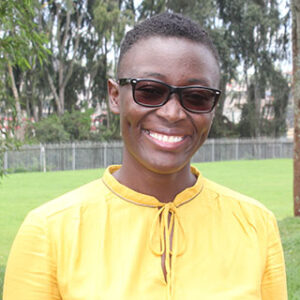
Cecilia Limera
Programme Officer – Programme Development and Commercialisation (PDC)
Cecilia Limera is a plant biotechnologist with additional experience in molecular breeding and agronomy. Cecilia holds a PhD in agricultural, environmental, and food sciences with a specialisation in plant biotechnology from Universita Politecnica delle Marche, Italy; she did part of her research at the University of Wyoming, USA. She also holds an MSc. in horticulture with a specialisation in vegetable genetics and molecular breeding from Nanjing Agricultural University, China and a Bsc. in horticulture from Egerton University. Cecilia’s accomplishment in scientific communication has been demonstrated through her publication record culminating into over 17 peer-reviewed papers, conference papers, and book chapters. Before joining AATF, Cecilia was a postdoc research fellow at Universita Politecnica delle Marche in Mezzetti’s plant biotechnology laboratory, responsible for research in organogenesis, somatic embryogenesis, and genetic engineering techniques. She also participated in proposals writing and training of undergraduate and masters students in plant biotechnology techniques. Previously, Cecilia worked for Canken International Company as chief agronomist responsible for the coordination of agronomists’ activities and training, budget preparations, and farmer consultations. Cecilia also worked for Technoserve coffee initiative as a business advisor intern with a responsibility for training coffee farmers on GAP and GPP. As a Programme Officer in the Programme Development and Commercialisation (PDC), Cecilia is responsible for the coordination and submission of technical reports, preparation of project documents, annual project budget reviews, project status reports and participation in project review meetings. Cecilia is a Kenyan national.

Howard Okiror
Legal Officer
Howard Okiror, an Advocate of the High Court of Kenya, holds a Bachelors of Law (LLB) from the Catholic University of Eastern Africa (CUEA), a Post Graduate Diploma in Law from the Kenya School of Law, a Master’s Degree in Intellectual Property from the African University (WIPO/ARIPO Academy) Zimbabwe, several professional certificates on Intellectual Property issued by WIPO Academy and is currently finalising on his Master of Business Administration at CUEA. Prior to joining AATF he worked at the Kenya Copyright Board, a state corporation under the Office of the Attorney General and Department of Justice (Kenya), as a Legal Counsel and Copyright Prosecutor where he was involved in advising government and training the public on issues surrounding copyright and related rights, and also conducted prosecution for copyright infringement cases. Prior to joining government, Howard worked as a commercial and litigation lawyer with the firms of Yunis Mohammed & Associates and Muriithi & Ndonye Advocates respectively. At AATF, Howard is responsible for managing the AATF Contract Lifecycle Management System, negotiating, drafting and management of license agreements for technology development and deployment; facilitating and coordinating the filing of project and institutional intellectual property rights, updating and maintaining the intranet board folder, assisting the Director of Legal Affairs with corporate compliance functions; organising and facilitating project intellectual property meetings; assisting the Director of Legal Affairs in managing the AATF Technology and Innovation Support Centre; and assisting in intellectual property trainings for AATF and other partners. Howard is a national of Kenya.
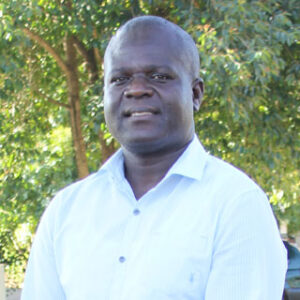
Stephen Obunga
Accountant
Stephen Obunga holds Bachelor of Commerce (First Class Honours) degree from KCA University. He is a Certified Public Accountant of Kenya and has vast working experience in donor financial reporting, budgeting and forecasting, preparation of year end accounts, management accounting and reporting, variance analysis, preparation of audit papers, administration, cash flow management, compliance reviews and internal control systems monitoring. Prior to joining AATF he worked at DAI Global LLC as Senior Accountant for the East Africa Trade & Investment Hub Project, at CIP as Finance and Admin Officer and at ActionAid International as Finance & Admin Assistant. As the Accountant, his work is to provide support in the execution of financial services of AATF projects and other institutional activities ensuring effective and transparent utilisation of financial resources and integrity of financial services, ensure promotion of a client-oriented approach consistent with AATF rules and regulations and prepare and maintain accurate, timely, complete and reliable periodical financial reports and ensure that all financial transactions comply with set organisation policies and procedures as well as development partners’ regulations. Stephen is a Kenyan national.

Paul Oni Owolabi
Associate Administrative and Finance Officer
Paul Oni Owolabi is an Associate Member of the Institute of Chartered Accountants of Nigeria (ACA) and an Associate Member of the Institute of Strategic Management of Nigeria (ASM). He holds a B.Sc. Accounting (Second-class Honors) degree from the University of Benin and is currently pursuing an MBA (finance option) degree from Patten University, Oakland, California. Prior to Joining AATF, he worked as an Accountant at Sterling Travels and Tours Limited, Private Networks Nigeria (PNN GROUP), and OneCard TopUp Services Limited. Paul’s experience spans the travel and tourism industry, telecommunication and fast moving consumer goods. As Associate Administrative and Finance Officer, he is responsible for the day-to-day finance functions, project finance activities for West Africa, tax and payroll management, West Africa sub-grantee financial review, travel management, procurement, general administration and basic human resource services in the Nigeria Country office. Paul is a Nigerian national.
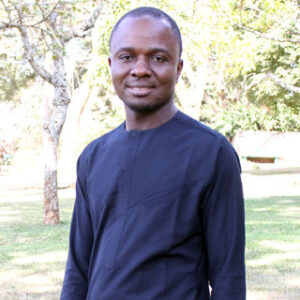
Simeon Eze
Driver, Abuja Office
Simeon Eze has been competently trained in Defensive and Advanced Driving and is currently undertaking a Bachelor’s degree in Political Science at the National Open University of Nigeria. Before joining AATF, he worked with the Canadian International Development Agency Program and the Castle and Towers Guards. Simeon has over 20 years’ experience in protocol, transportation and logistics. At AATF, he is responsible for administrative, transportation and logistics support. Eze is a national of Nigeria.
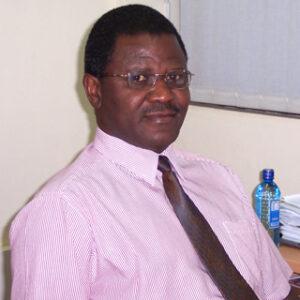
Francis Nang’ayo
Senior Manager, Regulatory Matters
Francis Nang’ayo, an Applied Ecologist and leading expert on biosafety and regulatory affairs, holds a B.Sc. (Hons) degree in Biological Sciences (University of Nairobi, Kenya), an M.Sc. degree in Environmental Biology (University of Guelph, Canada) and a Ph.D. degree in Applied Ecology (Imperial College, University of London). Additionally, he holds a postgraduate diploma in Crop Protection from Imperial College, London. His career as a scientist begun at the Kenya Agricultural and Livestock Research Organisation (KALRO) where he worked for close to 20 years rising through the ranks of Research Officer, Senior Research Officer, Principal Research Officer and Deputy Director of the Biotechnology Research Centre in Nairobi. He was later appointed General Manager in charge of Phytosanitary Services, Biosafety, and Quarantine Affairs at the Kenya Plant Health Inspectorate Service (KEPHIS) before progressing to his current appointment at AATF of Senior Manager and Head of Regulatory Affairs in 2005. He is responsible for securing regulatory approval authorisations for testing and deployment of agricultural technologies including ensuring compliance with regulatory requirements of target countries for AATF projects. Francis is a member of many professional societies including the Entomological Society of Kenya (ESK); the African Crop Science Society, the African Association of Insect Scientists (AAIS), the Public Research and Regulation Forum, the African Biotechnology Stakeholders Forum (ABSF) and the Common Market for Eastern and Southern Africa (COMESA) Expert Panel on Biotechnology and Biosafety, to name a few. Previously, Francis served as Member of the Kenya Standing Technical Committee on Imports and Exports (KSTCIE), the National Biosafety Committee (NBC) of Kenya, Institutional Biosafety Committee of KALRO and the Executive Committee of the Inter-African Phytosanitary Council of the African Union (IAPSAC). Francis has authored many publications. He has participated as a panelist on many TV talk shows on the safe utilisation of modern biotechnology and delivered several presentations on the same topic including Key Note addresses at professional, university and industry meetings at international and regional levels. Francis is a Kenyan.

Munyaradzi Jonga
Seeds Production Manager
Munyaradzi Jonga is an agronomist and seed production specialist with vast experience in agriculture and the seed sector, and a passion for seed sector development and management. He holds BSc and MSc degrees in Crop Science as well as an MBA from the University of Zimbabwe. He has a Diploma in Marketing, Research Methods for Agronomists and has undertaken a Management Development course at the University of Cape Town as well as various courses on quality assurance and auditing of quality management systems. Munyaradzi got agricultural research and extension experience working in the fertiliser, crop chemicals and seed industries, where he gained understanding of various farming systems both in the smallholder and large scale farming sectors. He has worked as a Gazetted Seed Inspector, Seed Production & Quality Assurance Manager and Operations Manager for Seed Co Ltd. These appointments allowed Munyaradzi to participate in critical panels, committees, associations and seed systems networks dealing with seed production development and administration in Zimbabwe, Eastern and Southern Africa. Munyaradzi has contributed to agriculture and seed sector development through training of seed growers and seed industry personnel during formal workshop presentations and field training in east and southern African. During his tenure at Seed Co Ltd, he developed a practical seed production manual – “Maize Seed Production Manual 2002” – to assist upcoming seed growers and seed production personnel and supervised many internship students from various colleges and universities. Munyaradzi is a national of Zimbabwe.

Arnold Ntulume Mbowa
Project Officer, Partnership for Africa Seed Technology Transfer Activity (PASTTA)
A trained agriculturalist with five years of experience in Seed production, product development, marketing and extension. He has built a career around expanding access to improved varieties of crops by farmers (both small holders and commercial) with roles in seed production, marketing and extension. Before joining AATF, Arnold worked as a product development agronomist at East African Seed (U) limited; as a team leader – Farmers’ Resource Centre at MWH foundation and a Sales and Marketing manager at Rhino Seeds (U) limited. He is an agricultural and development worker with cross-functional competences in seed production, testing and marketing as well as community mobilization and climate smart agricultural technologies. Arnold holds a Bachelor of Science degree in Agriculture from Makerere University college of Agricultural science and a certificate in project management and planning. At AATF, Arnold is the project officer for PASTTA project in Uganda responsible for overseeing all project work in Uganda and ensuring that activities are implemented as planned. Arnold is Ugandan
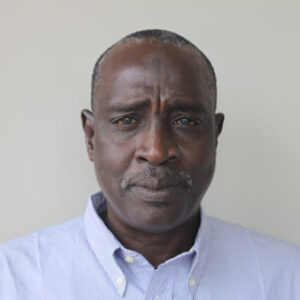
Issoufou Kollo Abdourhamane
Cowpea Project Manager
Issoufou Kollo Abdourhamane holds a Doctorate degree in Plant Pathology from Texas A&M University, USA; a Master’s in Plant Pathology and Bachelors in Plant Protection from Purdue University, Indiana, USA. Before joining AATF, Issoufou worked for the West and Central African Council for Agricultural Research and Development CORAF/WECARD) where he was the Coordinator for the Australian Agency for International Development (AusAID) Part

Monica Ndoria
Regional Advocacy Coordinator – TELA
Monica Ndoria has over 10 years’ experience in program leadership across Africa and Asia. She holds an MSC degree in Development Management from Open University (UK), an MBA degree in Strategic Management from Daystar University (Kenya), a BSC Accounting degree from the Oxford Brookes University (UK), a certificate in project leadership from the Cornell University (USA) and project management certification through the Project Management for Development Professionals (PMDPro I&II) from LINGOs. Key areas of work include multi-country project coordination, advocacy and policy engagement including capacitating vulnerable and at-risk populations to engage in policy processes around biotechnology, health systems strengthening and HIV/AIDS. Prior to joining AATF, she worked with the Catholic Relief Services East African Regional office as a Senior Program Coordinator where she worked with civil society organisations across Africa and Asia through on-site and virtual technical assistance to set up platforms/networks and strengthened them to coordinate consistent engagement of CSOs in national health sector planning and policy processes. She has supported development of communication and strategic plans, including providing learning platforms that have promoted peer learning and strategic partnerships with development partners, academia and government ministries. She is trained in evidence-based advocacy; skills that have been critical in informing her mentorship to countries. At AATF, Monica coordinates the regional advocacy portfolio for the TELA project that is implemented in six countries. In this role, she works with national agricultural research centers in Sub-Saharan Africa to develop and implement effective outreach and policy advocacy strategies that seek to create an enabling environment for evidence-based policy making in agriculture. Monica is a Kenyan national.
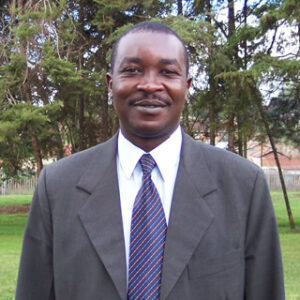
Gordon Ogutu
Protocal/Liaison Assistant
Gordon Ogutu holds an “O” level certificate and a Grade III Motor Vehicle Mechanic certificate. Before joining AATF, he worked as Liaison Assistant for six years at the International Livestock Research Institute (ILRI), Clerk/Driver for four years at the African Academy of Sciences (AAS), Clerk/Driver for the Smallholder Dairy Project for one year and as Purchasing Assistant/Driver for one year at Sacross Agencies. Gordon is a national of Kenya.

George Marechera
Agribusiness Development Manager
George Marechera holds an MBA from Wolverhampton University, UK, a Bsc Honours degree from University of Zimbabwe and several professional management qualifications. Before joining AATF he worked as General Manager for Saltlakes Holdings (Zimbabwe) spearheading tobacco contract farming which targeted smallholder farmers; Makita Manufacturing (UK) as General Manager responsible for operations; Simmonsigns Pvt Ltd (UK) as a General Manager, where he was involved in business management, strategy and human resources management; the Ministry of Lands, Agriculture and Rural Resettlement in Zimbabwe as an Economist and later as a Senior Economist responsible for project administration and finance directly involved in the management of agricultural projects funded by the Government and donors including European Union, World Bank, United States Agency for International Development (USAID), United Kingdom Department for International Development (DFID) and Japanese Aid. By the time he left the Ministry, he was the Executive Assistant to the Permanent Secretary of the Ministry responsible for change management, commercialisation and subcontracting initiatives. During his tenure at the Ministry, he also worked as a part time lecturer in economics and business management. George has worked in the agricultural industry and has wide experience in project and agri-business management, business strategy, business consultancy, marketing management, change management, economic development and regeneration. He has proven leadership skills in managing, developing and motivating teams. As Agri-business Specialist, George is responsible for co-ordinating and facilitating business initiatives between the AATF, agro-industry, smallholder farmers and all stakeholders in the agricultural industry to ensure appropriate knowledge is disseminated for effective and efficient service delivery. George Marechera is a Zimbabwean national.

Sylvester Oikeh
WEMA Project Manager
Sylvester O. Oikeh has more than 18 years of interdisciplinary experience in research and development projects on natural resources and crop management, and plant nutrition. He joined AATF from the Africa Rice Centre, WARDA, where he worked for five years, rising to the position of a Principal Scientist/Soil Fertility Agronomist and Project Leader. As a Principal Scientist, Sylvester’s key duties included conducting strategic and applied research on integrated soil fertility management and plant nutrition to improve natural resources management and increase rice production in smallholder farming systems. He took part in multi-country donor-funded projects, backstopping national research systems scientists in west and eastern Africa, and supervising doctoral students, among other duties. Between 1990 and 2003, Sylvester held various positions at the International Institute of Tropical Agriculture (IITA), including as a GTZ Research Fellow, a consultant agronomist, and a visiting maize scientist involved in collaborative research investigating micronutrient enhancement of tropical maize. In 2001, he was a Postdoctoral Fellow at Cornell University’s USDA Plant, Soil and Nutrition Lab at Ithaca, New York, USA. Sylvester attained his doctorate in Soil Science specialising in Soil Fertility and Plant Nutrition from the Ahmadu Bello University, Nigeria, in 1996. He obtained a Masters degree in Crop Science from the University of Nigeria, Nssuka, the same university from where he had graduated with a Bachelor of Agriculture degree in Horticulture. Sylvester holds a Postgraduate Diploma in Irrigation Engineering from the Centre for Irrigation Engineering of the Katholieke universiteit, Leuven, Belgium. Besides research, he has lectured in Nigeria at the University of Benin (Soil Science) and Anambra State College of Education (Crop Production, Horticulture and Agricultural Economics). Sylvester is a national of Nigeria.
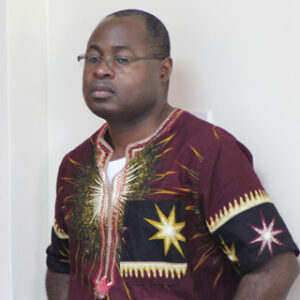
Caleb Obunyali
Programme Officer WEMA
Caleb Obunyali, a seed scientist, holds a BSc in Botany and a Master of Philosophy (MPhiL.) in Seed Science and Technology both from Moi University. Prior to joining AATF he worked as an Inspector at the Kenya Plant Health Inspectorate Service (KEPHIS) in seed certification and plant variety testing and protection. Before joining KEPHIS, he worked at the East African Herbarium Department, National Museums of Kenya, as a Research Fellow in Plant Taxonomy and Biodiversity Conservation, and on the Seed for Life Project as an Assistant Project Officer. As Programme Officer for the Water Efficiency Maize for Africa (WEMA) project, Caleb is responsible for supporting the development and implementation of product delivery strategies, seed production, product deployment and quality management in target countries. Caleb is Kenyan.
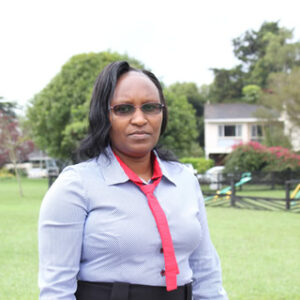
Fredah Nyaga
Accountant
Fredah Nyaga holds a Bachelor of Commerce (Finance option) degree from the Catholic University of Eastern Africa (CUEA) and is a Certified Public Accountant of Kenya. She is a registered member of the Institute of Certified Public Accountants of Kenya (ICPAK) and the Association of Women Accountants in Kenya (AWAK). Before Joining AATF, Fredah worked at Micro Enterprises Support Programme Trust (MESPT) as a Senior Finance Officer. Previously she worked at Business Services Market Development Project (BSMDP) as a Project Finance Officer, at Tacco Consultants as Audit Assistant, and at Comtec Group Ltd as an Accounts Assistant. As an Accountant at AATF, Fredah is responsible for providing support in the execution of financial services for AATF projects and other institutional activities by ensuring integrity, effectiveness and transparent utilisation of financial resources. This includes, but is not limited to, preparation and maintenance of accurate, timely, complete and reliable periodical financial and management reports that comply with set company policies and procedures as well as development partners’ regulations. Fredah is a Kenyan national.
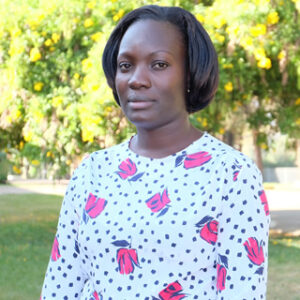
Edith Kouko
Project Officer Rice
Edith Kouko holds a B.Sc. degree in Agriculture (honors) from the University of Nairobi, Kenya (with plant breeding, and quantitative and population genetics being some of her best performed units) and an M.Sc. degree in Agriculture from Yamagata University, Japan, with her thesis based on dissemination of New Rice for Africa (NERICA) in Western Kenya. Before joining AATF, she served as a Sub County Crops Development Officer (Nambale and Butula Sub Counties) and a Sub County Agribusiness Development Officer (Butula and Samia Sub Counties) in the State Department of Agriculture in Busia County for seven years. Her duties included coordination of implementation of agribusiness and crop related programmes and projects in Busia County such as National Accelerated Agricultural Inputs Access Programme (NAAIAP), Kenya Agricultural Productivity and Agribusiness Project (KAPAP) and Programme for Agriculture and Livelihoods in Western Communities (PALWECO), preparation and implementation of work plans and budgets, compilation of sectional reports, linking farmers to markets and input suppliers and interacting closely with stakeholders along agricultural value chains with the aim of supporting small scale producers achieve food security and raise their household incomes. Edith was also involved in the New Rice for Africa (NERICA) Dissemination Programme in Busia County. As Programme Assistant in the Department of Technical Operations, Edith is responsible for the coordination and submission of technical reports, preparation of project documents, annual project budget reviews, project status reports and participation in project review meetings. Edith is a Kenyan national.

Caroline Thande
Administrative Assistant
Caroline M Thande has training in Business Management, Secretarial and on various computer packages. Before joining AATF, she worked for CARE International in Somalia, based in Nairobi, for 15 years in various capacities. Before her departure, she was the Administration Assistant cum Executive Secretary to the Country Director and the Assistant Country Director. Prior to CARE, she worked with Catholic Brothers of St Charles Lwanga as secretary cum receptionist. Caroline is a Kenyan National.
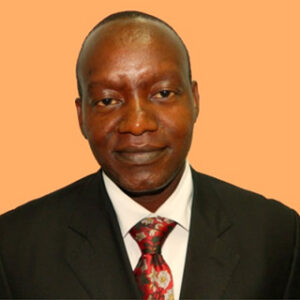
Abed Mathagu
Programme Officer, Regulatory Affairs
Abed Mathagu holds a Bsc. degree in Forestry from Moi University in Kenya, a Msc. degree in Plant Pathology from the University of Nairobi in Kenya and a Master’s degree in Biosafety from the University of Ancona in Italy. He is currently enrolled for a PhD program at Jomo Kenyatta University in Kenya. Before joining AATF, Abed was acting as the General Manager for Phytosanitary and Biosafety Services at the Kenya Plant Health Inspectorate Service (KEPHIS). He served in the National Biosafety Authority Board between 2010 and September 2014 as well as in its predecessor, the National Biosafety Committee from 2005 to 2009. Abed participated in the development of Kenya’s Biosafety Act and Regulations as well as in different institutional biosafety committees, including those of the International Livestock Research Institute (ILRI), the Kenya Agricultural Research Institute (KARI) and the International Centre of Insect Physiology and Ecology (ICIPE). He participated in the Codex Alimentarius Commission’s Committee on Genetically Modified Food Labelling and Ad Hoc Intergovernmental Taskforce on Foods Derived from Biotechnology which developed the Codex Plant Guideline for GM Risk Assessment. Abed chaired the Technical Committee on Biotechnology at the Kenya Bureau of Standards from 2009 to September 2014. He has wide experience in regulatory work. As Programme Officer, Regulatory Affairs, Abed is charged with coordinating planning, implementing and monitoring of WEMA regulatory activities to secure permit approvals and ensure compliance with regulatory requirements in partner countries. He is a citizen of Kenya.

George Agyemang Sarpong
Member, Board of Trustees
George Agyemang Sarpong is the Managing Partner of G.A. Sarpong & Co., Legal Practitioners and Consultants, Accra, Ghana; and a former Director of the Ghana School of Law. His specialist areas include Law of the Sea, Biotechnology, Land Use Planning and Mining. George is an alumnus of the Faculty of Law University of Ghana (LL.B. – 1981); the Ghana School of Law (B.L. – 1983); the University of British Columbia (LL.M. International Law – 1984); and the University of London School of Oriental and African Studies (LL.M. – Environmental Law, Occasional Student – 1995). He has been the recipient of many awards, fellowships and visiting scholarships, including from the UN (Human Rights Studies, Geneva and Strasbourg) and the Universities of British Columbia, Leiden, Nottingham, Queens (Belfast) and North-Western (United States).
George entered academia after a career in the Ghana Armed Forces. He trained at the Ghana Military Academy and the Combat Arms School CFB Gagetown, New Brunswick (Canada). He was commissioned into the Recce Regiment of the Ghana Armed Forces in 1973, and served in various capacities including Squadron Leader, 3 Squadron, Recce Regiment and Administrator at the Legal Services Directorate of the Ghana Armed Forces. He was a member of the Commission of Enquiry into the Organisational Structure of the Ghana Armed Forces (General Erskine Commission) in 1987-1989; and an Adjunct Lecturer of the Law of the Sea at the Ghana Armed Forces Command and Staff College. He honourably retired with the rank of Major in 1990.
George joined the Faculty of Law, University of Ghana in 1990. He served for 16 years during which period he taught Public International Law, Law of Contract, Business and Environmental Laws. He also served on several boards and committees of the university. He has published extensively in local and international journals on Public International and Environmental Law and attended several training programmes and conferences in his areas of expertise. He has also been involved in several initiatives as legal consultant to the Government of Ghana, UN bodies and international agencies in the implementation of projects, programmes and policies on sustainable development in several sectors including irrigation, fisheries, wetlands, land use planning, biodiversity, biotechnology, mining, plant health, environmental health and food safety.
George is a member of the Ghana Bar. He was a member of the African Union’s High-Level African Panel on Modern Biotechnology that provided a blueprint for biotechnology in Africa. He is currently a member of the World Commission on Environmental Law (WCEL) of the International Union for Conservation of Nature (IUCN).

Jessica Fransisca Colaco
Jessica Francisca Colaço is the co-founder and VP of Growth and Success at Brave Venture Labs based in Nairobi, London and San Francisco. Brave is a HR tech company sourcing and matching talent to companies looking to build product teams. She co-founded the iHub with Erik Hersman in 2010 and served in various leadership positions – she was the Director of Partnerships and Community at iHub, the Founding Manager between 2010 and 2011 at iHub and Research Director between 2011 and 2013 at iHub Research.
Jessica also co-founded WMIAfrica and AkiraChix. She was the ISOC-Kenya Chapter Treasurer in 2014, ACM-W Nairobi Chapter Chair 2014, TED Global Fellow 2009 and Bass Guitarist with her band Bass ii IV. She was part of the DFID’s Digital Advisory Panel team as a member and advisor in 2015.
Jessica holds a Master’s degree in Applied Computing and a BSc in Computer Science, both from the University of Nairobi. She is an Ambassador at blackbox.vc, a Public Speaker, MC, Director at Valuraha Group Ltd, Advisor at Ma3Route, and a Startup and Tech Evangelist.
Jessica is a recipient of various honors and awards, including 1st Place – Robotics Community Challenge – AFRON in 2014, Top 40 women under 40 in Kenya in Tech and Business in 2012, 2011, and 2009, TED Global Fellow 2009, 100 Most Influential Young Kenyans in 2016, 100 Most Influential Young Africans in 2017, and Top 100 iHub Community Member.

Noble Banadda
Member, Board of Trustees
Noble Banadda earned his Doctorate degree in chemical engineering at Katholieke Universiteit Leuven in Belgium. He also had postdoctoral professional training at Massachusetts Institute of Technology (MIT).
Noble is a Professor of Biosystems Engineering at Makerere University and his area of research is bioprocessing engineering specifically mathematic modeling of biological systems and interactions. He led the team that pioneered the first ever farmer-based low-cost multiple purpose vehicle in Uganda.
In 2013, Noble was inaugurated as the youngest fellow of Uganda National Academy of Sciences. In 2015, he was honoured as a young scientist at the World Economic Forum in Dalian, China, and in November 2018, he was selected as the winner of the 2018 Pius XI Medal Award which is a global award given every two years by the Pontifical Academy of Sciences to a scientist under the age of 45, who has conducted and shown exceptional promise in scientific research. He is the first African to receive this award since it was established in 1961.

Hamadi Iddi Boga
Member, Board of Trustees
Prof. Hamadi Iddi Boga is the Principal Secretary of the State Department for Agricultural Research in the Ministry of Agriculture, Livestock, Fisheries and Irrigation in the Government of Kenya. He is the former founding Principal of Taita Taveta University and was its Vice Chancellor between 2007 and 2017. He was a Professor in the Department of Botany at the Jomo Kenyatta University of Agriculture and Technology. His skills and interests are in biology, agricultural science, sequencing, microbiology, molecular biological techniques and RNA genes. He also has an interest in microbial ecology of insects’ guts, soils and soda lakes and has worked with termites, the soda lakes of Kenya, mangrove swamps, agricultural and forest soils and also on Mount Kenya glacier. He has a PhD in Biology from Universität Konstanz in Germany.
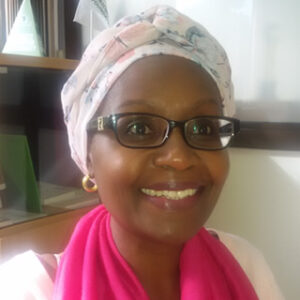
Nancy Muchiri
Senior Manager, Communications and Partnerships
Nancy Muchiri is a public relations practitioner with an MSc in Organisational Development from the United States International University, Kenya; a BA from the University of Nairobi; and a postgraduate diploma in Mass Communications from the same university. She has also attended the Diploma in Management course at the Kenya Institute of Management, Nairobi. Before joining AATF, Nancy worked with the SOS Children’s Villages, an international child welfare organisation where she established and headed the fundraising and communications department for three years. Prior to that, she worked with the East African Portland Cement Company Ltd as head of the public relations section for eleven years, providing corporate and product communications leadership. Nancy is responsible for managing the Foundation’s public and partnership relationships through strategic communications to enhance visibility and positioning of the Foundation and its projects. Nancy is Kenyan.
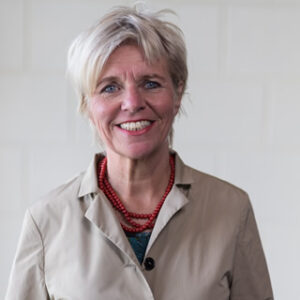
Ingrid Wünning Tschol
Member, Board of Trustees
Ingrid Wünning Tschol received her PhD in Biology from the University of Tübingen Germany. From 1985 -1990 she did her postdoctoral research at Massachusetts Institute of Technology in Cambridge and State University of New York in Stony Brook, USA. Ingrid is Senior Vice President Strategy at the Robert Bosch Stiftung, Stuttgart.
Further stations in her career include a director’s position at Deutsche Forschungsgemeinschaft in Bonn/Germany and the position of the Head of Medical Section at the European Science Foundation in Strasbourg, France.
She serves on numerous national and international committees, including the Board of Trustees of the University of Ulm, the International Steering and Programme Committee of the Next Einstein Forum (NEF, Africa) which she co-initiated, the Supervisory Board of the Euroscience Open Forum, the Food Security Advisory Board of the University of Hohenheim and the Board of Trustees of the Museum of Natural History, Berlin.
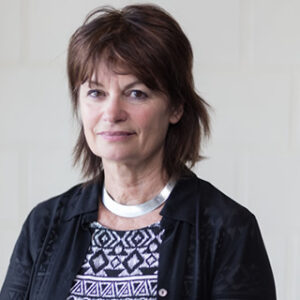
Dame Anne Glover
Member, Board of Trustees
Anne Glover holds a BSc degree in Biochemistry from Edinburgh and a PhD degree in Molecular Microbiology from Cambridge, UK. She has pursued a career in scientific research at Aberdeen University and her research has been varied including studying how proteins are directed to the correct location within our cells, the diversity and function of the microbial population in soil, the development of biological sensors (biosensors) to detect environmental pollution and, more recently, how we respond to stress at the molecular level.
This current area of research has particular relevance to how we age (our cells are under stress in Alzheimer’s and Parkinson’s disease) and how we respond to artificial stresses such as chemotherapy. Anne has commercialised some of her biosensor technology into a successful company which diagnoses environmental pollution and provides solutions for its clean-up.
In 2008 Anne was recognized as a Woman of Outstanding Achievement in Science, Engineering and Technology (SET) and has worked hard to raise the profile of women in SET and to ensure that not only are women recruited into careers in SET but that they are supported to remain in the profession during their careers. She has promoted the communication of science and has appeared on BBC and other international television and many global radio programmes. In 2009, Anne was awarded a CBE by the Queen in recognition of her services to environmental sciences.
Anne was the first Chief Scientific Adviser to the President of the European Commission (2012-2015). Prior to that, she was the first Chief Scientific Adviser for Scotland (2006-2011). In both positions Anne transformed the way science, engineering and technology were used and discussed within government and developed strategic initiatives to bridge the gap between science and policy. She has also been a very effective and well respected ambassador for European science. Anne was also Vice Principal for External Affairs and Dean for Europe at the University of Aberdeen and is presently Special Adviser to the Principal of Strathclyde University.
Anne became a Dame Commander of the Order of the British Empire (DBE) for services to Science in the UK and Europe in the 2015 Queen’s Birthday Honours List.

Jeremy T. Ouedraogo
Member, Board of Trustees
Jeremy T. Ouedraogo, a scientist in genetics and plant breeding, holds a PhD degree from the University Laval, Canada. His research focused on the use of biotechnology tools in plant breeding. Jeremy is the Director of African Biosafety Network of Expertise (ABNE). Prior to this appointment he was a plant breeder, Head of the Plant Genetics and Biotechnology Laboratory in the national research system of Burkina Faso. He has contributed to the creation of many cowpea varieties that are released in Burkina Faso and other West African countries.
Since 2002, Jeremy has been fully involved in biotechnology/biosafety strategy development and implementation in his country. He has participated in the committee which elaborated the biosafety guidelines for Bt Cotton trials and contributed to the approval of the referred trials as a member of the Biosafety Scientific Committee. Jeremy has been involved in the activities of public awareness and communication on biotechnology engineered crops through more than fifty presentations/conferences on modern biotechnology and GM crops in many African countries. He has also been involved in new biotech crops projects for Africa such as cowpea and sorghum in Burkina Faso. Jeremy has been a nominated member of the Africa Biofortified Sorghum (ABS) External Advisory Board hosted by the Africa Harvest Foundation. Jeremy was an elected Member of the Burkina Faso Parliament from 2007 to April 2011 where he contributed to strengthening parliamentary awareness of biosciences issues. Jeremy served as Minister of Animal Resources and Fisheries of Burkina Faso from 2011 to 2014.

Emmanuel Okogbenin
Director, Programme Development and Commercialization (PDC)
Emmanuel Okogbenin, a well-trained scientist in plant breeding, genetics, and genomics with good background in agronomy, and physiology, has experience spanning over 23 years working in and leading several research projects in cassava at both international agricultural research (IAR) centres and national agricultural research institutes (NARS). He holds a Ph.D. in Molecular Genetics/Plant Breeding from the University of Ibadan. He conducted his thesis research as a Rockefeller fellow with the International Center for Tropical Agriculture (CIAT) Colombia. Emmanuel holds M.Sc. in Agronomy and B.Sc. in Agriculture (Crop Science) degrees from the same university. As part of his PhD programme, he took courses in statistical genetics at the North Carolina State University, Raleigh. Emmanuel, a pioneer scientist in cassava biotechnology research, led the CIAT team in QTL mapping studies on the crop. As a cassava breeder/geneticist at CIAT, he led the Marker-Assisted Selection (MAS) initiative for cassava mosaic disease (CMD) resistance resulting in the release of the first CMD resistant Latin American cassava varieties in Africa. He coordinated the activities of the CIAT Genetics Unit as part of his last duties in Colombia. Emmanuel has in the last few years pioneered Marker-Assisted Recurrent Selection (MARS) for drought tolerance and improved productivity of cassava in marginal drought prone ecologies in Africa, in addition to leading the cassava breeding community of practice in SSA under the platform of the CGIAR-Generation Challenge Programme (GCP). In the course of his career he has worked for IITA, Nigeria; CIAT, Colombia; NRCRI, Nigeria; CGIAR-GCP and the Federal Ministry of Agriculture and Rural Development (FMARD), Nigeria. In the FMARD, he was a member of the ministerial core team for the cassava transformation agenda of the Federal Government of Nigeria. He has been a consultant and collaborator with the Donald Danforth Plant Science Centre, USA on international projects in Africa. Emmanuel’s publications include journal articles, book chapters and conference papers presented at international and national meetings. As the Director of Programme Development and Commercialization (PDC), Emmanuel identifies opportunities for agricultural technology interventions, assesses the feasibility and probability of success of project concepts, identifies sources of appropriate technologies, negotiates their access and deployment, and provides overall leadership in the implementation of AATF’s project portfolio. Emmanuel is a national of Nigeria.
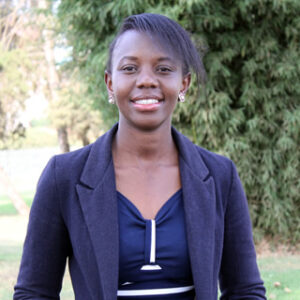
Ruth Rotich
Monitoring and Evaluation Officer
Ruth Jepkoech Rotich holds a Bachelor of Arts Degree from Kenyatta University and is currently pursuing her Master of Arts Degree in Monitoring and Evaluation at the African Nazarene University. Her areas of expertise include project planning, coordination and implementation, results based monitoring and evaluation, gender in development, and ICT for M&E and learning among others. Prior to joining AATF, Ruth worked with the Mennonite Economic Development Associates (MEDA) as an M&E Specialist/Head of Cross Cutting Services for the Equitable Prosperity Through Private Sector Development Project which aims at creating sustainable economic growth and reduce economic disparities by supporting the development of profitable, competitive small- and medium-sized enterprises (SMEs) in the agriculture, construction and extractives sectors in Kenya. Ruth also worked in a number of capacities for the African Medical and Research Foundation (AMREF) between 2012 and 2016, her last assignment as the M&E Specialist in the USAID-Kenya Agricultural Value Chain Enterprises Project (KAVES). As Monitoring and Evaluation Officer at AATF, Ruth is responsible for providing leadership to AATF in terms of M&E with a particular focus on the use of scientifically sound methods of impact evaluation and the implementation of the Foundation’s M&E framework and project-related M&E research and development activities. Ruth is a Kenyan.
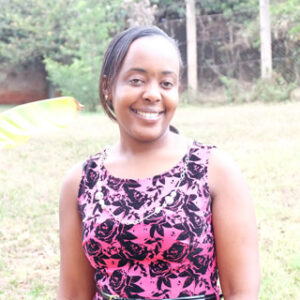
Jane Achando
Legal Officer
Jane Achando, an Advocate of the High Court of Kenya, holds a Masters Degree in Business Administration (strategic management) from the Kenya Methodist University, a Post Graduate Diploma in Law from the Kenya School of Law and a Bachelors of Law (LLB) from the University of South Africa. Prior to joining AATF she worked at Family Health International (Kenya) as a Contract and Grants Consultant where she was involved in the close out phase of the Aids Population and Health Integrated Assistance II (APHIA) project. Jane has worked as a litigation advocate at Kelly & Company Advocates and as a legal assistant at Musyoka, Wambua & Katiku Advocates. At AATF, Jane is responsible for managing the AATF Contract Lifecycle Management System, negotiating, drafting and management of license agreements for technology development and deployment; facilitating and coordinating the filing of project and institutional intellectual property rights, updating and maintaining the intranet board folder, assisting the Director of Legal Affairs with corporate compliance functions; organising and facilitating project intellectual property meetings; assisting the Director of Legal Affairs in managing the AATF Technology and Innovation Support Centre; and assisting in intellectual property trainings for AATF and other partners. Jane is a Kenya
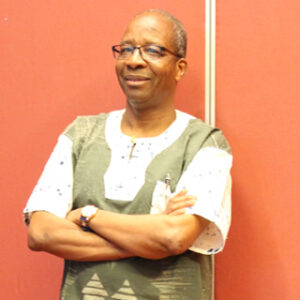
Moussa Elhadj Adam
Director Finance & Administration

Ousmane Badiane
Chair, Board of Trustees
Ousmane Badiane is the Founder and Executive Chairperson of AKADEMIYA2063 which is an international non-profit organization with headquarters in Rwanda and a regional office in Senegal. AKADEMIYA2063’s overall mission is to create state-of-the art technical capacities across Africa to support the efforts by the Member States of the African Union to achieve the key goals of the Agenda 2063 of transforming national economies to boost growth and prosperity. He also initiated the Malabo Montpellier Panel which encourages policy innovations for better development outcomes by bringing together leading global experts and decision-makers. He was the Africa Director for the International Food Policy Research Institute (IFPRI). In this role, he oversaw the institute’s two regional offices for West and Central Africa in Dakar and Eastern and Southern Africa in Addis Ababa. He coordinated IFPRI’s work program in the areas of food policy research, capacity strengthening, and policy communications in Africa. He was also in charge of IFPRI’s partnerships with African institutions dealing with the above areas.As an Advisor to the NEPAD Secretariat from 2004 to 2007, he was instrumental in developing and guiding the implementation of the Comprehensive Africa Agriculture Development Programme (CAADP). Before his tenure at IFPRI, Dr Badiane, a national of Senegal, was Lead Specialist for Food and Agricultural Policy for the Africa Region at the World Bank from January 1998 to August 2008. He previously worked at IFPRI as Senior Research Fellow from 1989 to 1997, when he led the institute’s work on market reforms and development.
While at IFPRI, he taught Economics of Development in Africa, as adjunct professor at Johns Hopkins University’s School of Advanced International Studies from 1993 to 2003. Dr Badiane received a Master’s Degree and PhD in agricultural economics from the University of Kiel in Germany.
His awards include a Doctoral Degree Honoris Causa from the University of KwaZulu Natal in South Africa, induction as Fellow of the African Association of Agricultural Economics and the Africa Food Prize in 2015.
